- Great ride and handling balance
- Standard wireless smartphone mirroring
- Efficient and punchy diesel engine
- Value equation isn't great
- Dual-clutch transmission needs refinement
- Lane keep assist is a little touchy
Thanks to its all-round capability, the Hyundai Santa Fe has been one of the best affordable family haulers of choice for Australians since its release locally in 2000. There has been four generations of Santa Fe since its release in Australia so can this fifth generation keep the successful momentum going? We tested the entry level 2023 Hyundai Santa Fe with the optional 2.2-litre turbo-diesel engine to see if you should pack your family into it or look elsewhere.
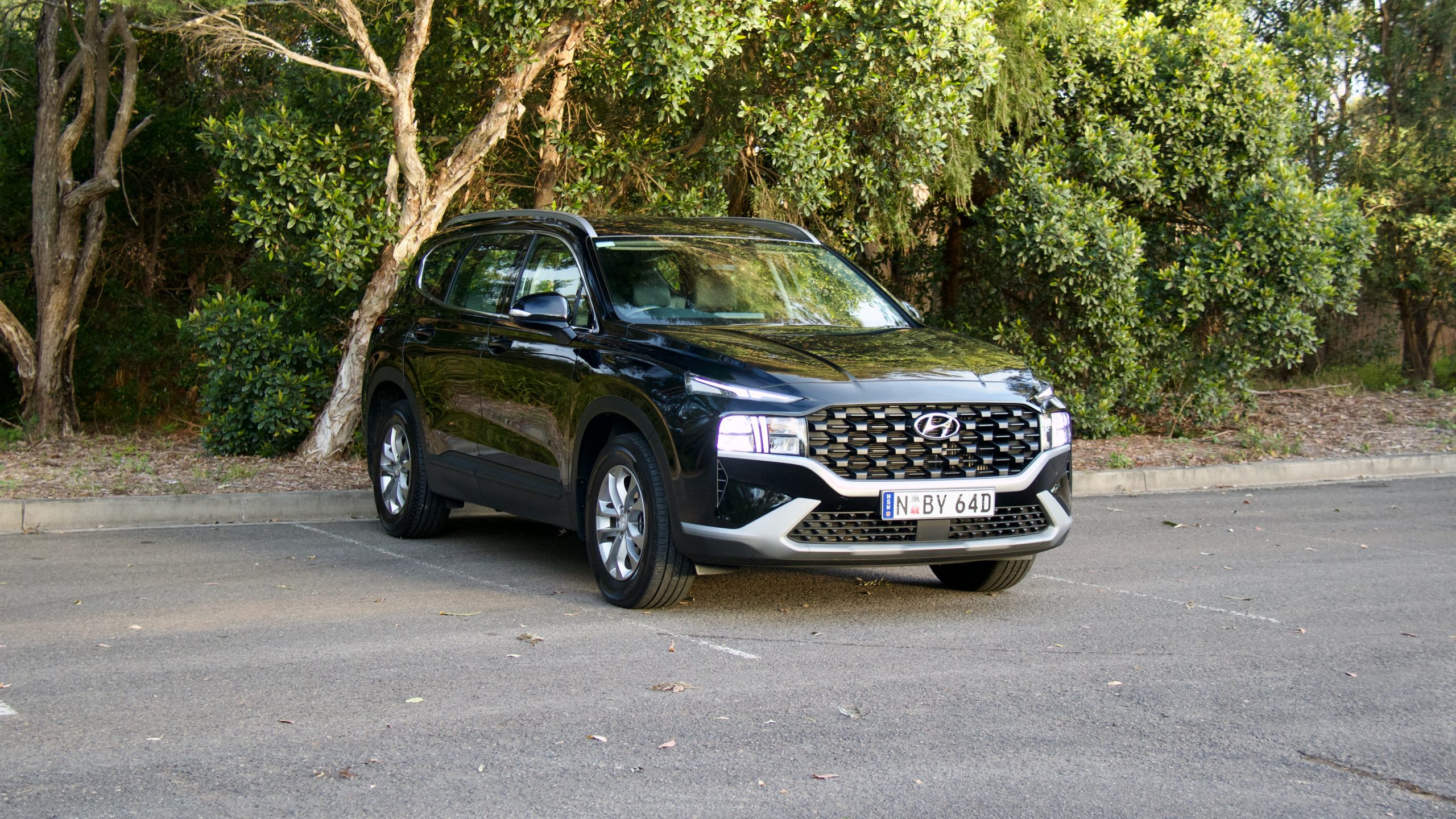
Choosing a seven-seater is not as easy as it once was as there are plenty of rivals to the Hyundai Santa Fe on the market: the Skoda Kodiaq, Volkswagen Tiguan AllSpace, Kia Sorento, Nissan Pathfinder, Toyota Kluger and Mazda CX-8. What separates the Santa Fe from its rivals?
Price & Equipment: 7/10
The entry point into the 2023 Hyundai Santa Fe range is known simply as ‘Santa Fe’ and is priced at $46,050 plus on-road costs. Choosing the diesel engine of our test car adds $3,500 to the price for a total of $49,550 +ORC or around $54,200 drive away, depending on location.
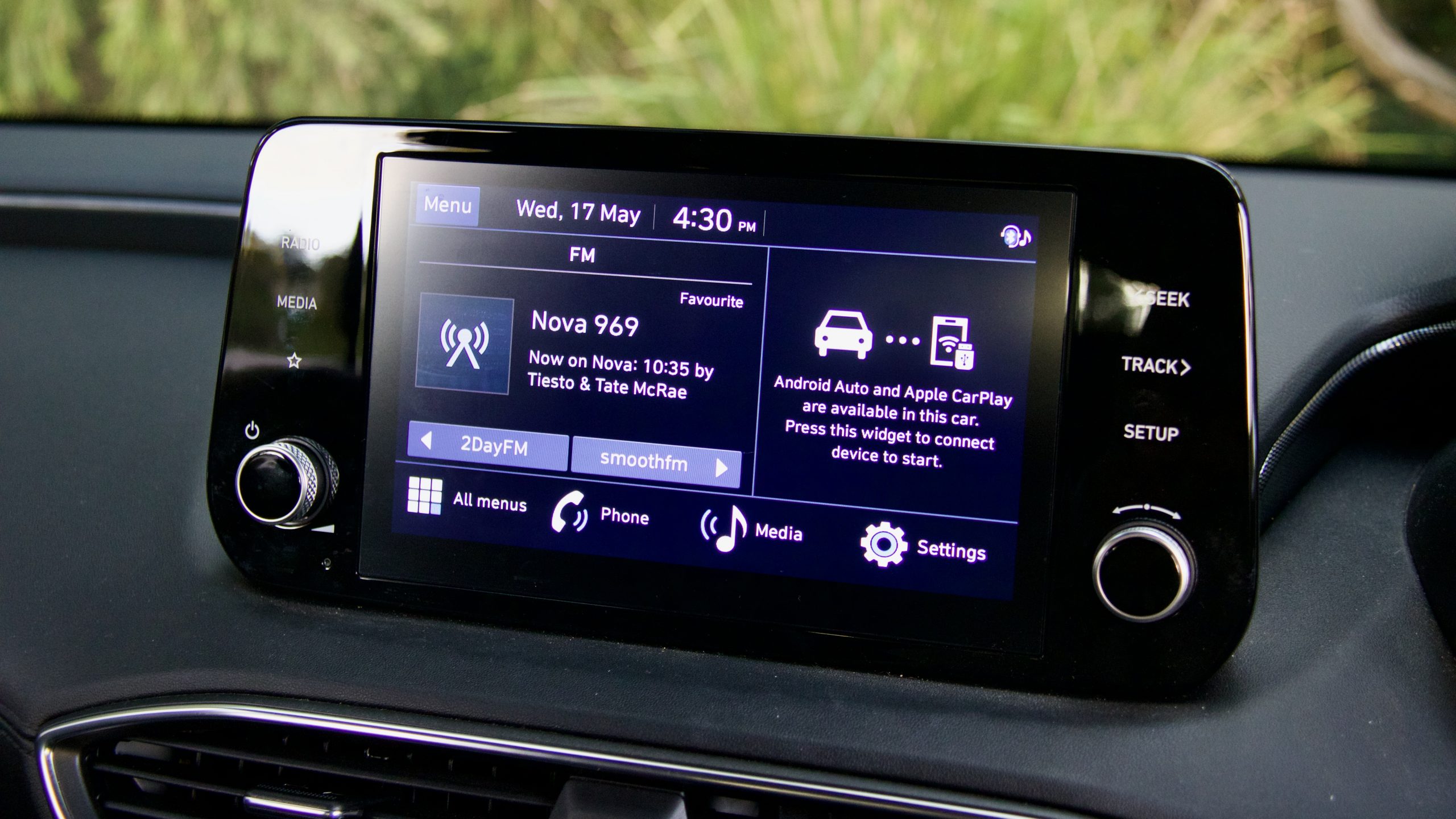
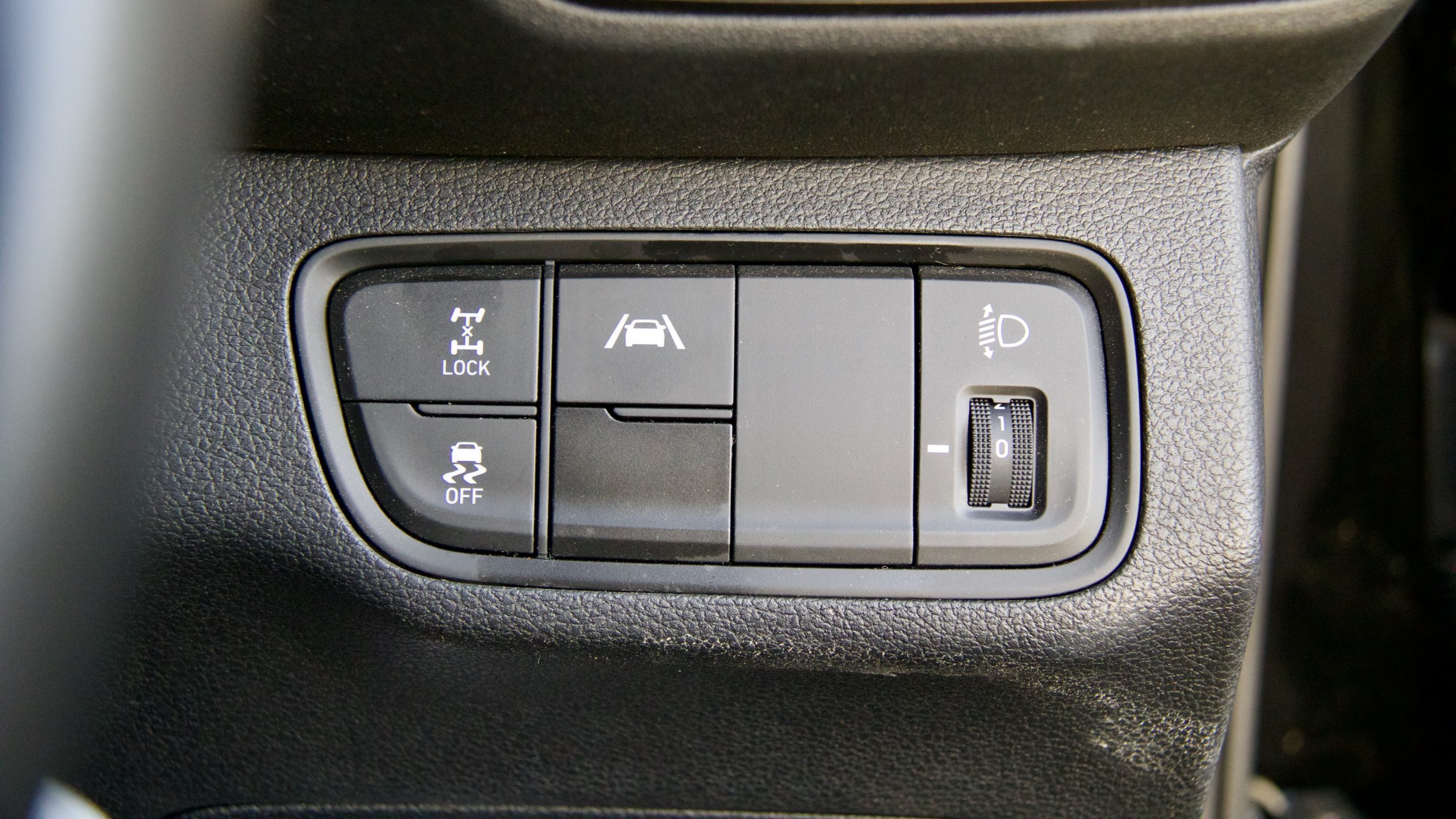
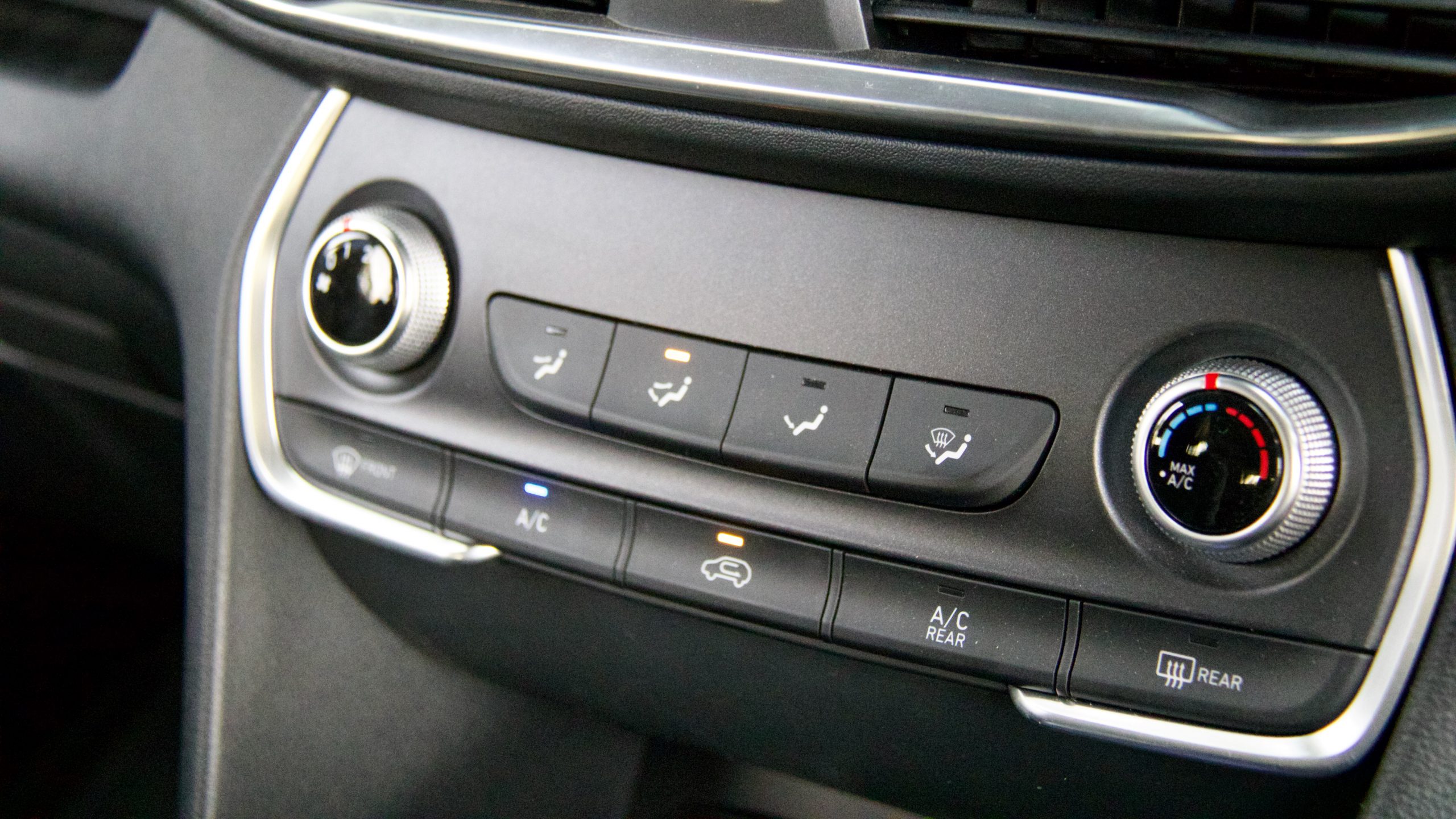
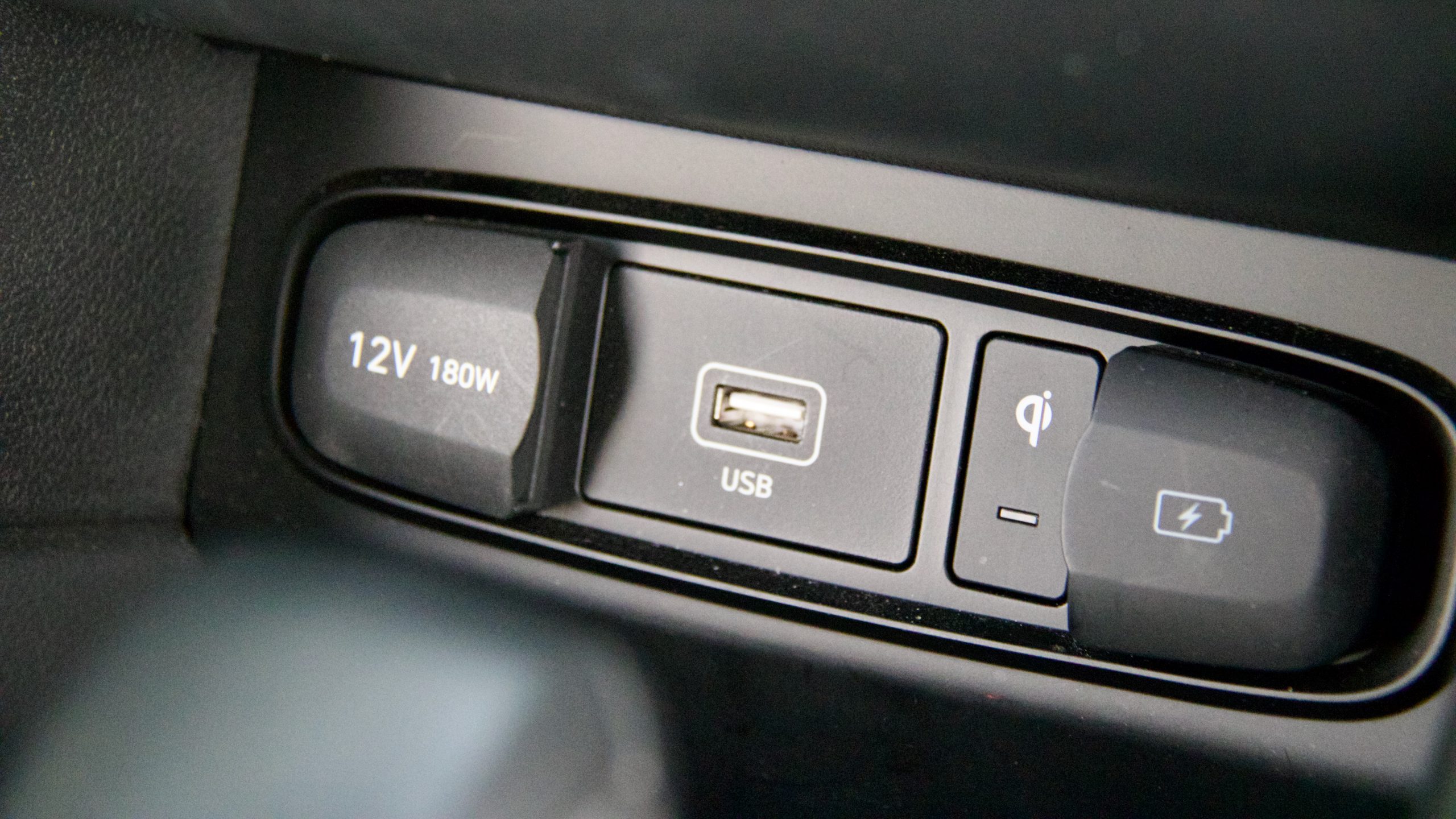
Standard kit on the base model Santa Fe includes:
- 17-inch alloy wheels with a full-size alloy spare wheel
- Dusk-sensing automatic LED headlights
- LED front daytime running lights
- Intermittent wipers
- Roof rails
- Heated exterior mirrors
- Selectable driving modes
- Eight-way driver’s seat (including lumbar adjustment)
- Leather steering wheel and gear knob
- Remote keyless entry
- Manual air-conditioning with a rear fan speed controller
- 8.0-inch touchscreen
- AM/FM radio
- Wireless Apple CarPlay and Android Auto
- Wireless smartphone charger
- Six-speaker sound system
- 4.2-inch driver’s information display
- Bluetooth phone and audio streaming
The Santa Fe range earned a five-star safety rating in 2018, and has since been upgraded with more safety kit across the range. Safety tech includes:
- Seven airbags (including a front centre unit)
- Auto emergency braking (AEB) with pedestrian, cyclist and intersection assist
- Adaptive cruise control with stop and go functionality
- Lane keep assist with lane departure warning
- Lane trace assist
- Blind-spot monitoring (with braking)
- Rear cross-traffic alert (with braking)
- Auto high beam
- Rear occupant alert
- Driver attention monitoring
- Rear parking sensors
- Reversing camera
- Tyre pressure monitoring
- Alarm
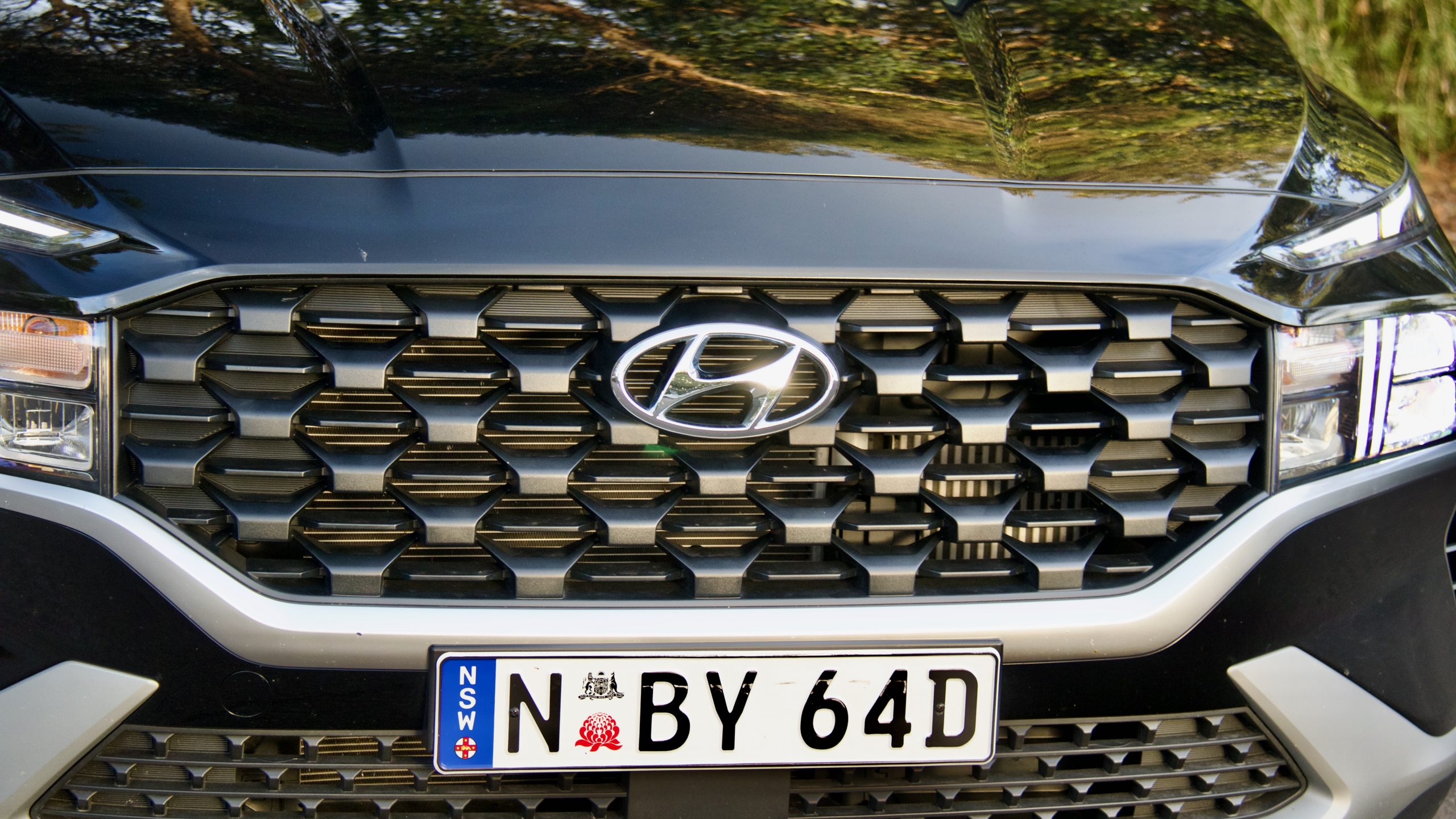
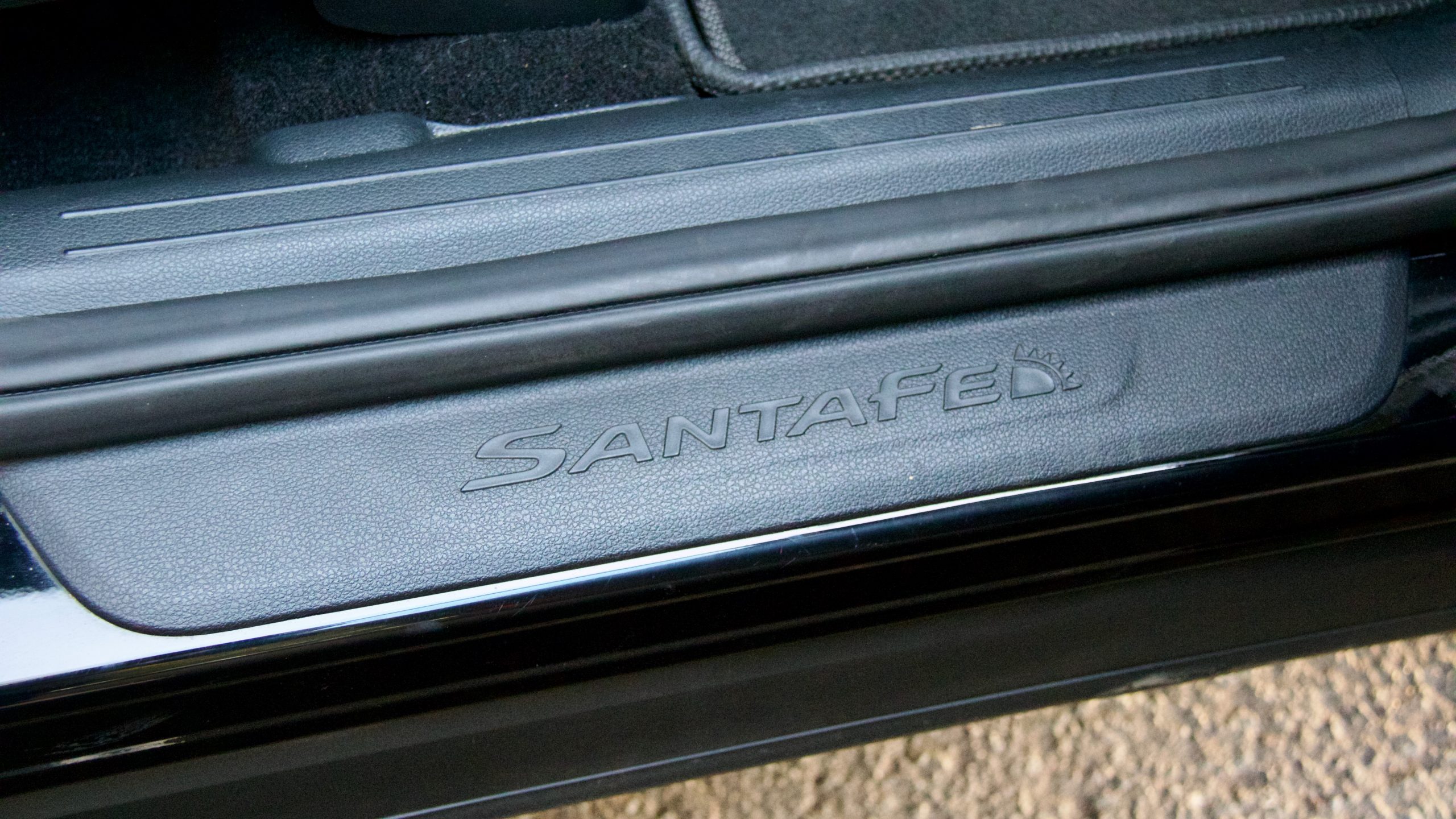
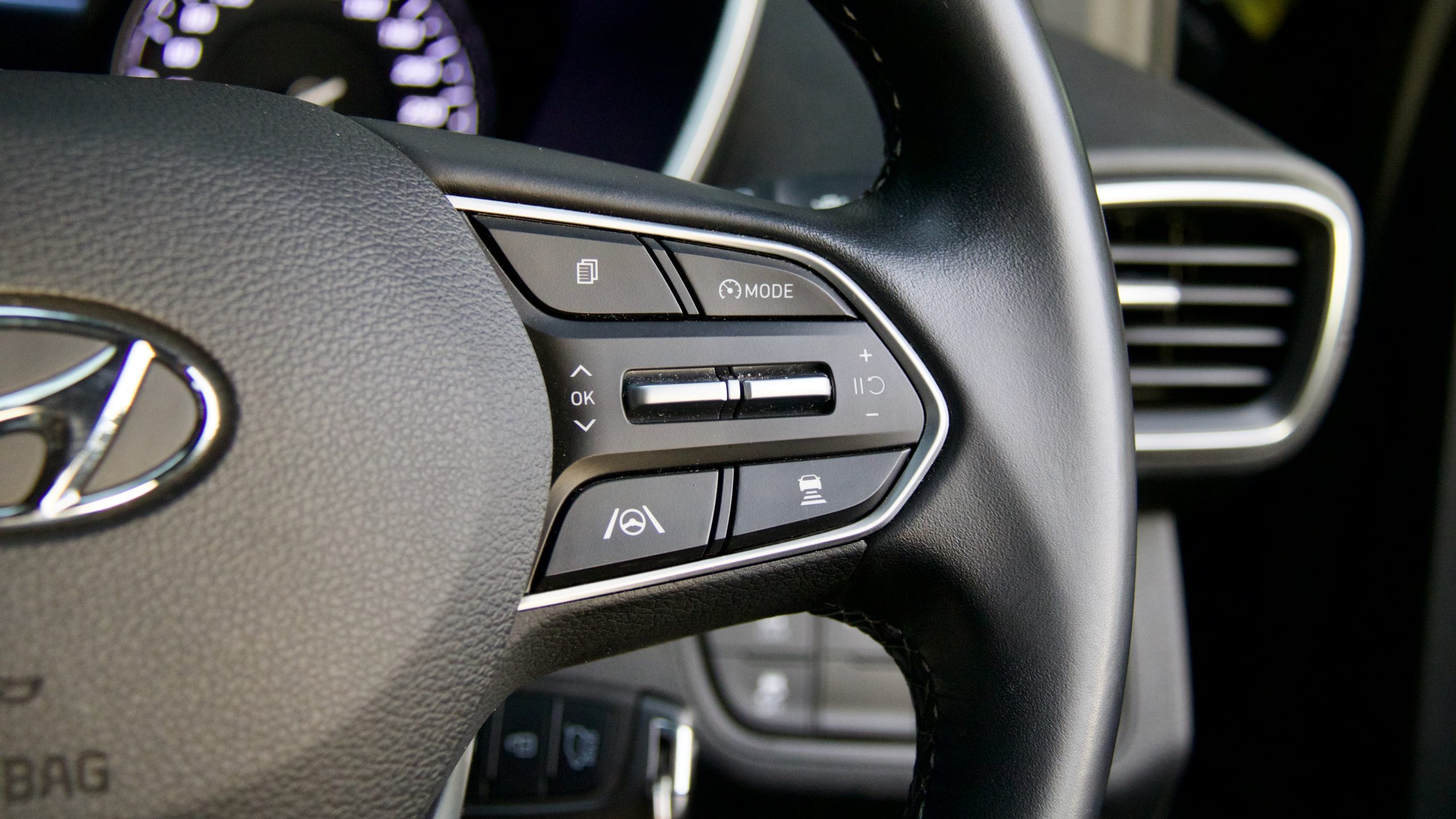
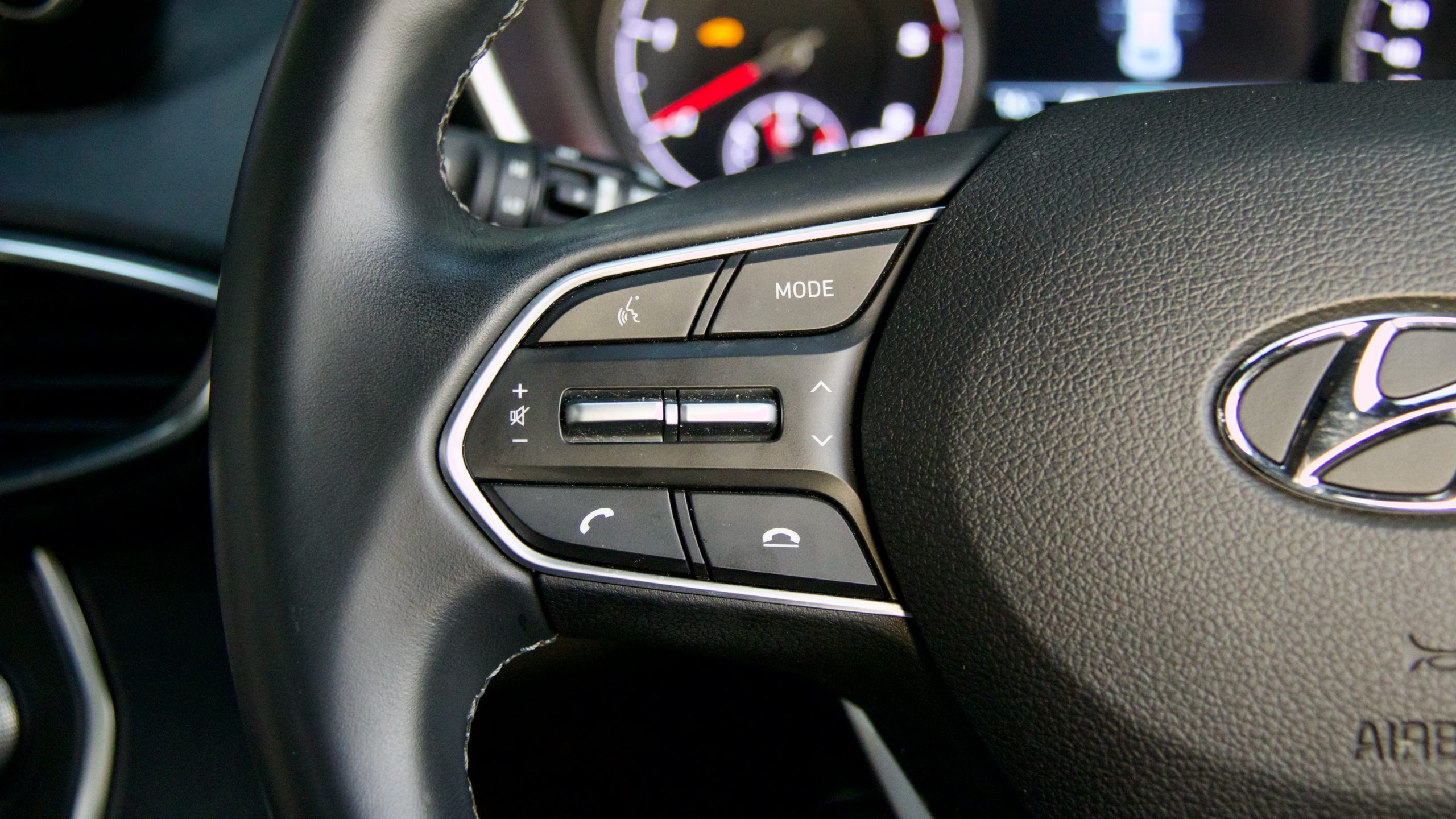
Colour options for the Santa Fe:
- White Cream
- Typhoon Silver ($695)
- Abyss Black (on our test car – $695)
While the base Santa Fe is reasonably well equipped, it can feel a bit sparse and stepping up to the Hyundai Santa Fe Active over the base model adds $4,200, but we would absolutely do it. The Active gains larger 18-inch wheels, keyless entry with push button start, front parking sensors, puddle lamps, auto wipers, leather upholstery, paddle shifters, auto-folding exterior mirrors, dual-zone automatic climate control and rear privacy glass. In our opinion, it’s definitely worth the extra spend.
In our opinion, the closest rivals to the 2023 Hyundai Santa Fe are the $53,790 drive away Kia Sorento S diesel and the $51,790 +ORC Toyota Kluger GX petrol. The Kia gains front parking sensors, front fog lights, rain sensing wipers, auto-folding exterior mirrors, digital radio and speed sign recognition over the Santa Fe – yet it’s also less expensive to buy.
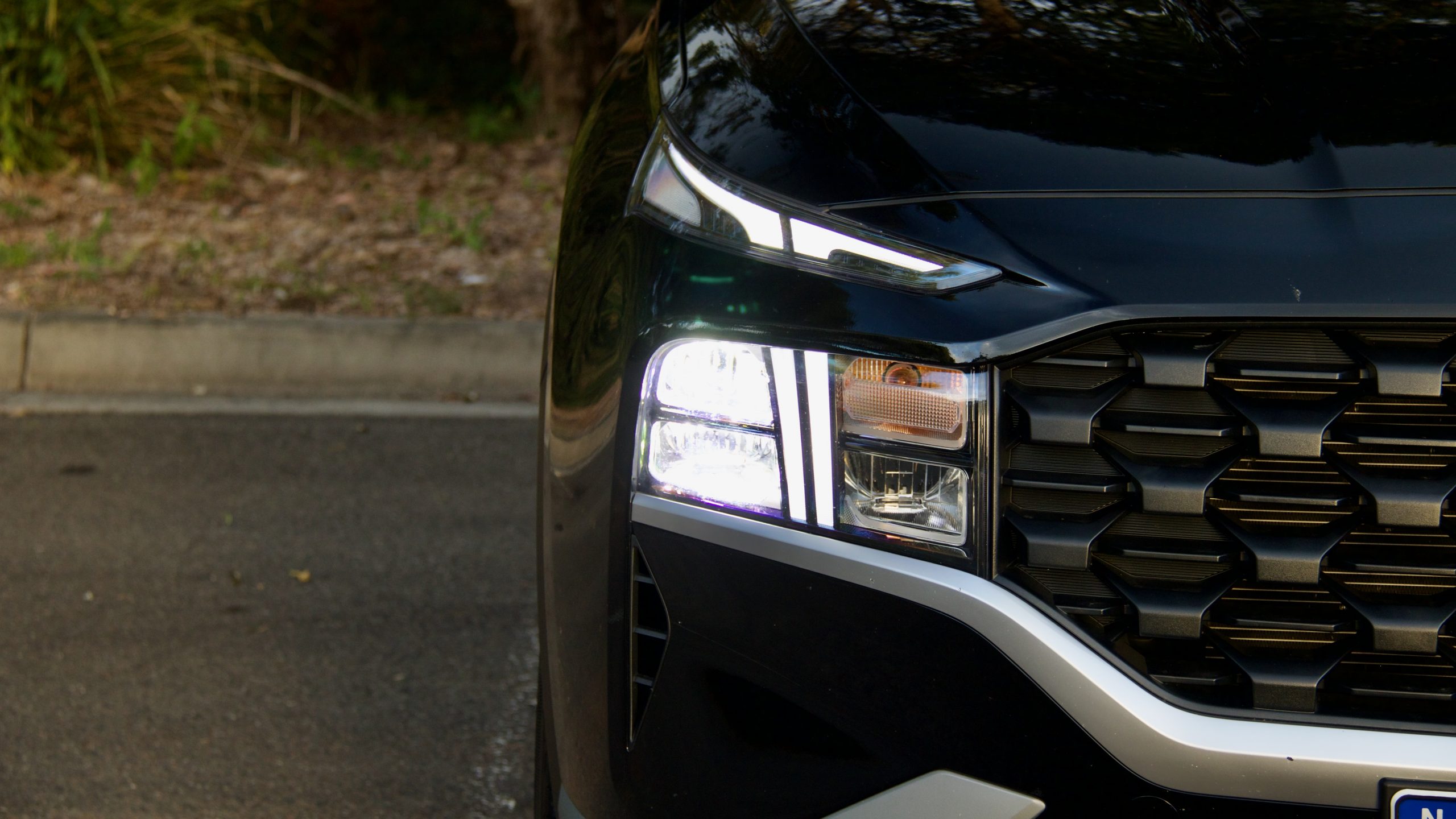
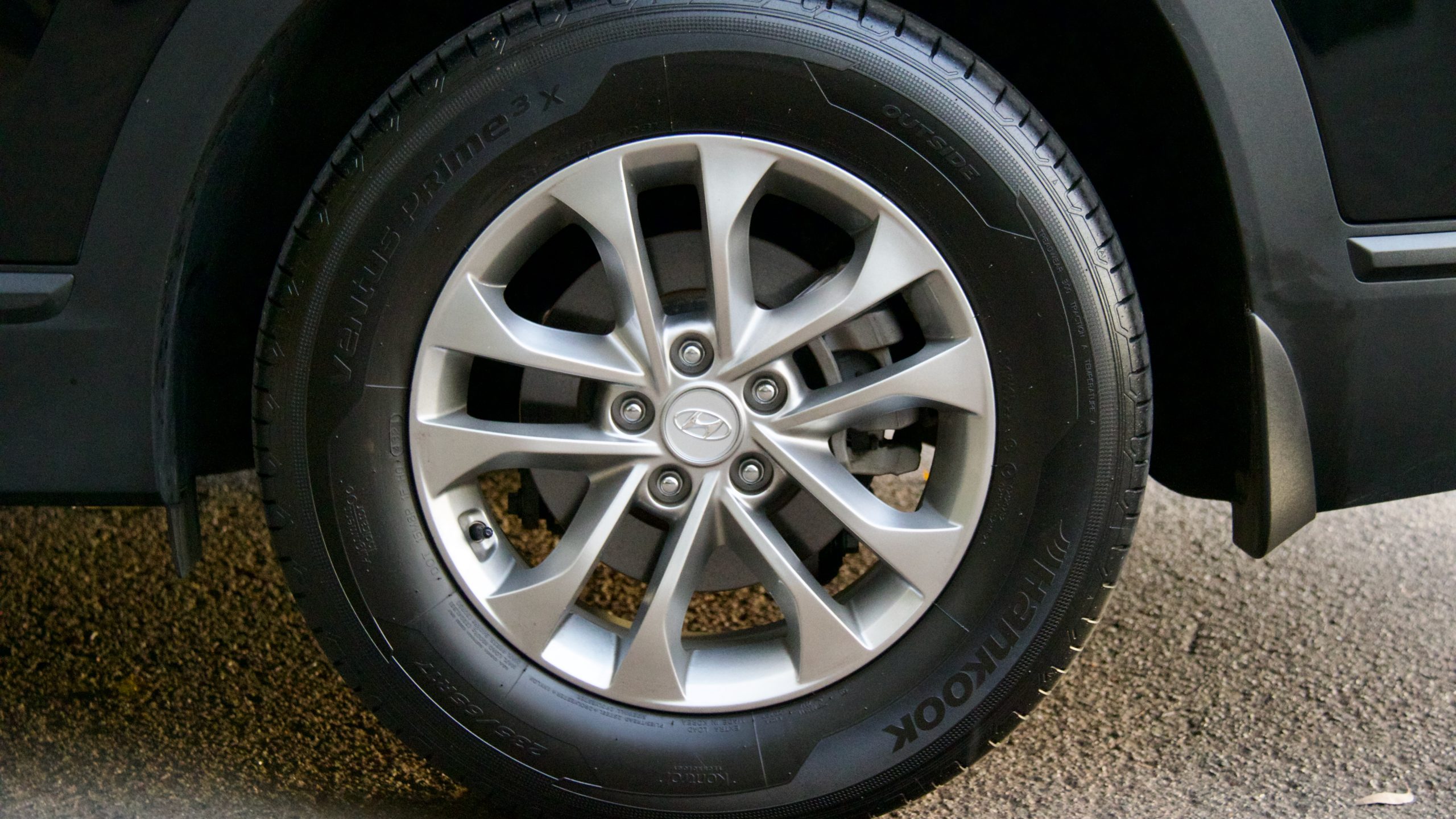
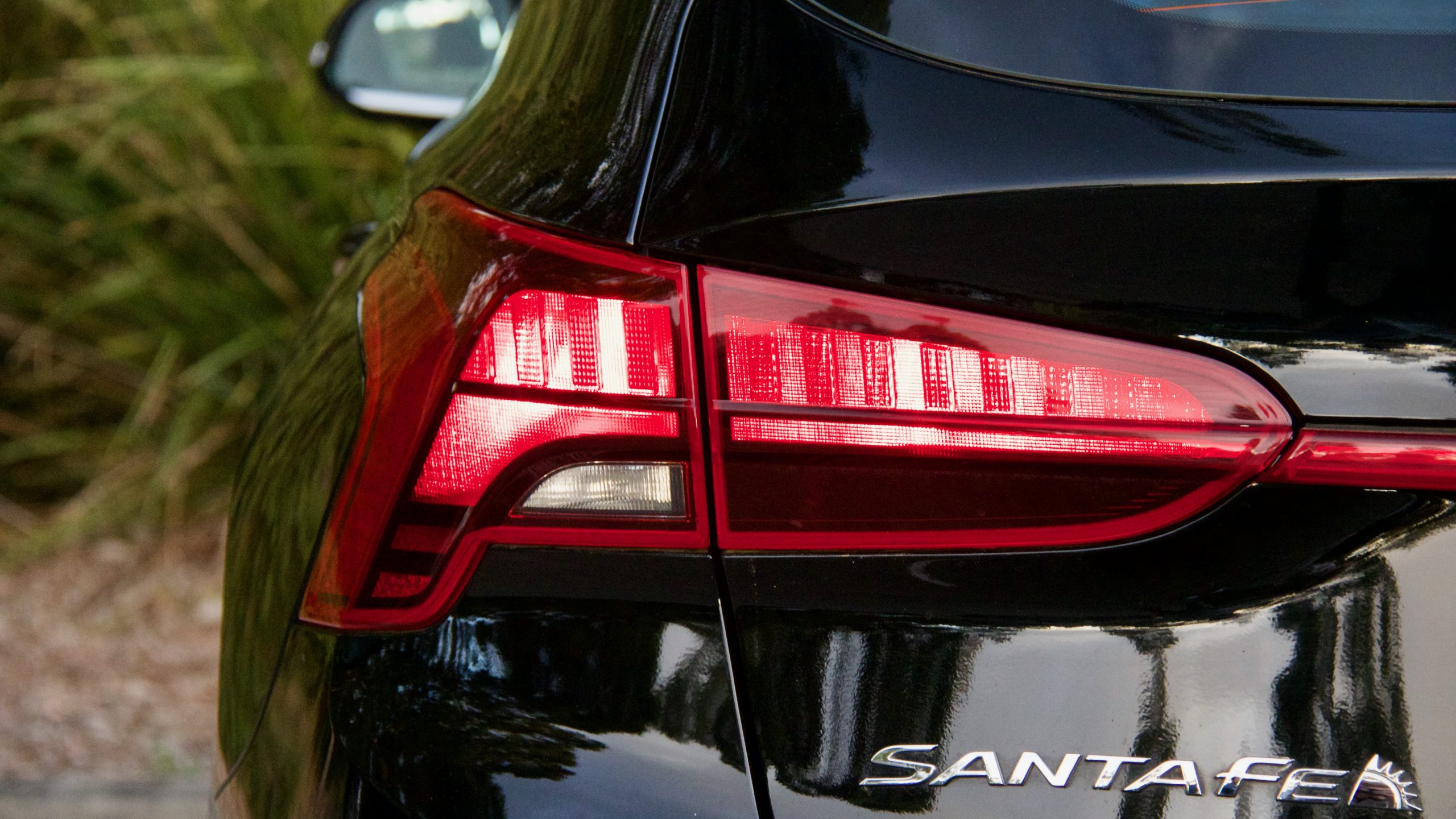
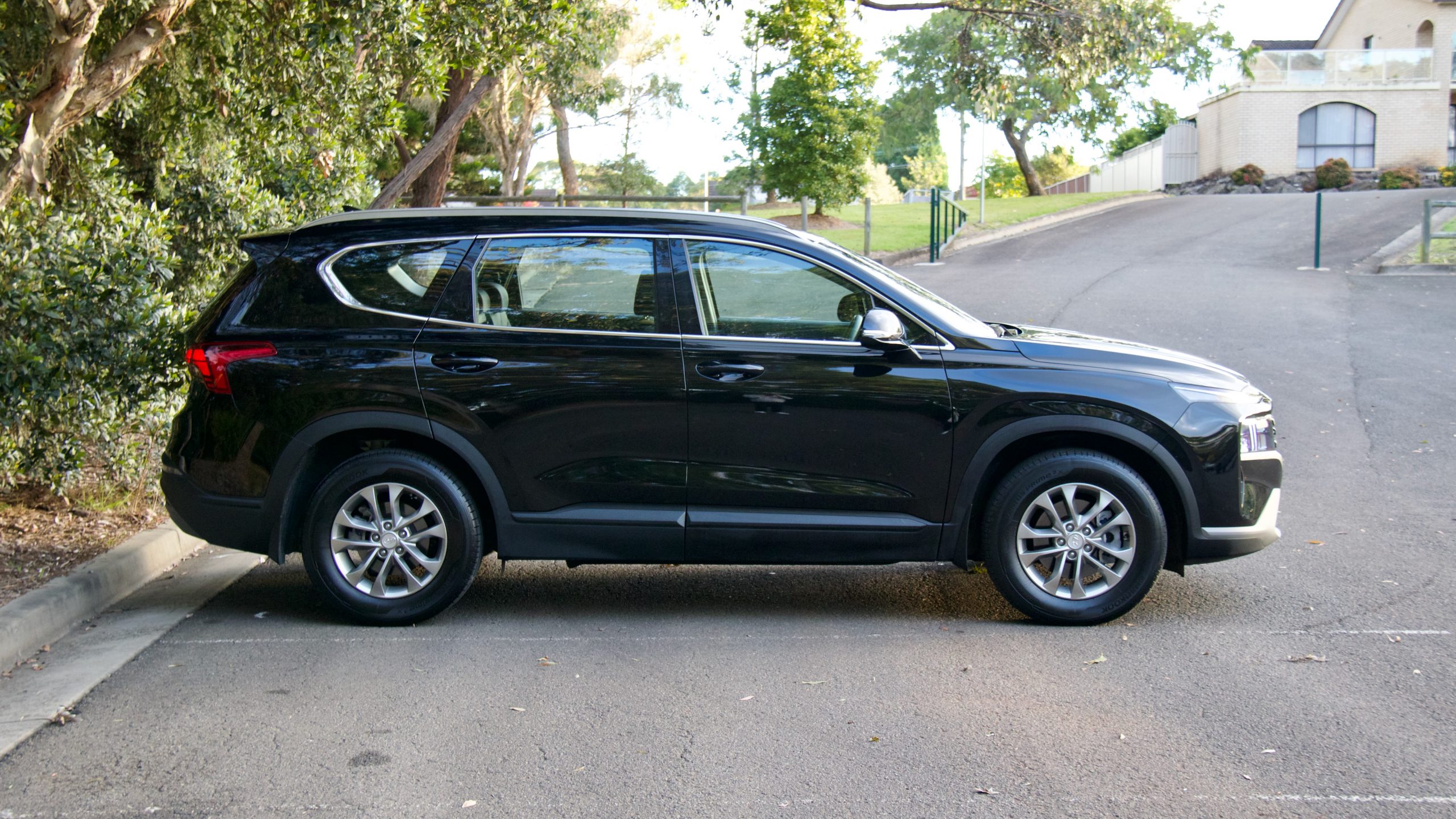
The more expensive Toyota features keyless entry with push button start, front parking sensors, larger 18-inch wheels, front fog lights, rain sensing wipers, heated and auto folding exterior mirrors, digital radio, road sign recognition and rear privacy glass. It’s safe to say both the 2023 Hyundai Santa Fe’s rivals offer better value for money, especially the Sorento, which uses the same platform and engine.
Performance & Economy: 8/10
The standard engine in the 2023 Hyundai Santa Fe range is a 200kW 3.5-litre petrol V6 that drives the front wheels, but our test car was fitted with the optional 2.2-litre turbocharged four-cylinder diesel engine that produces 148kW of power (at 3,800rpm) and 440Nm of torque (between 1,750rpm and 2,750rpm). Power is sent to a reactive all-wheel drive system through an eight-speed dual-clutch automatic transmission.
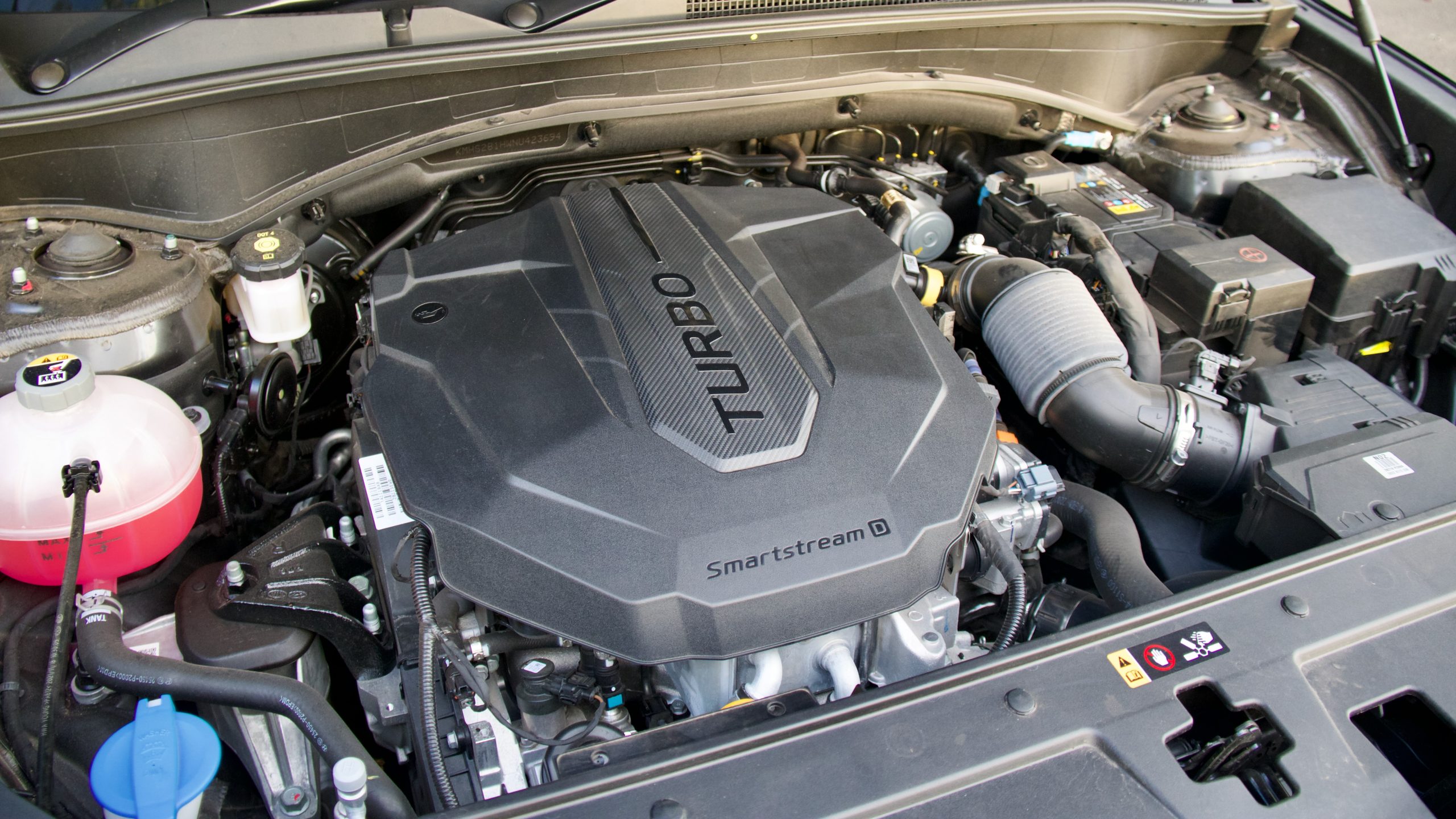
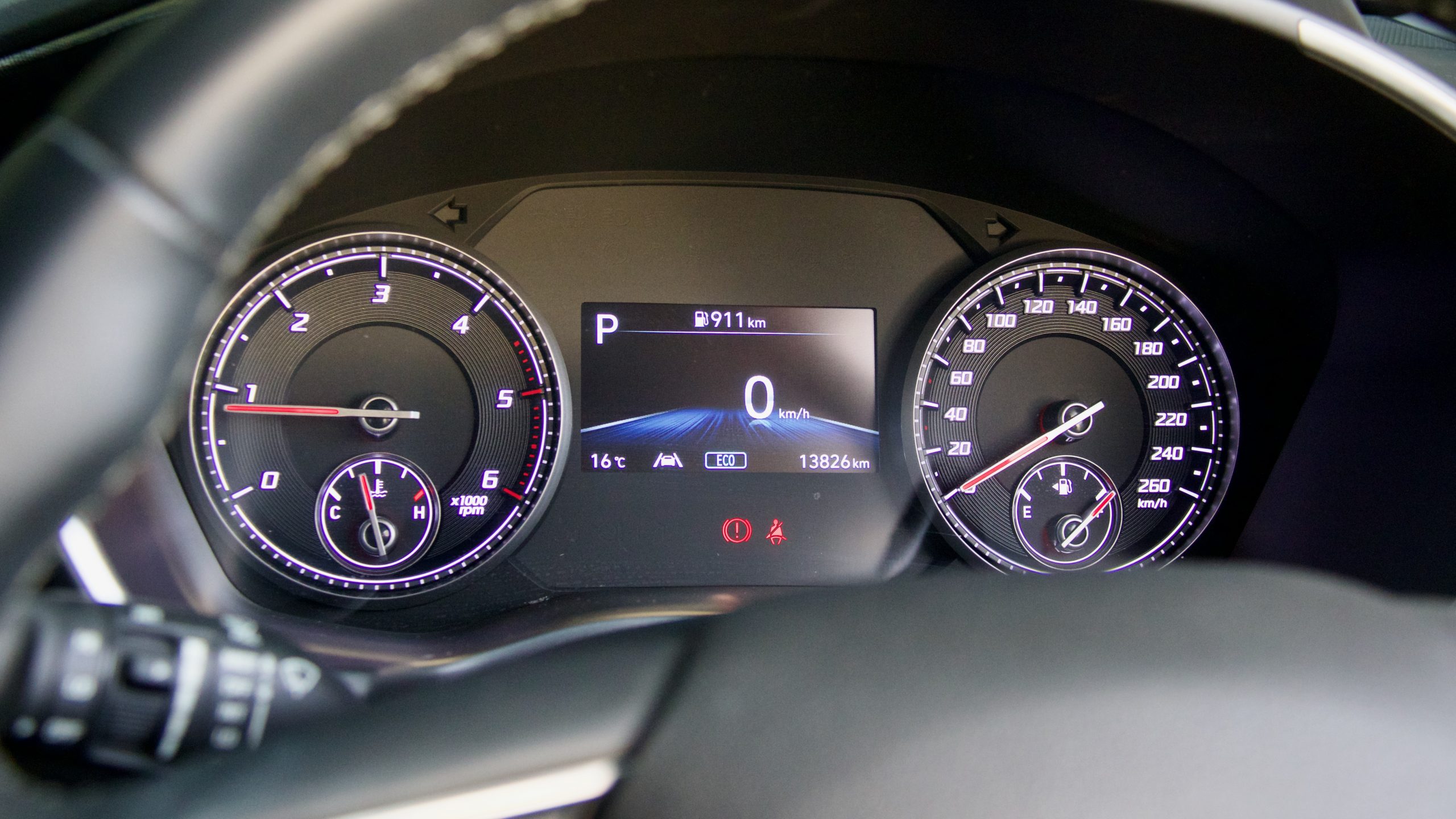
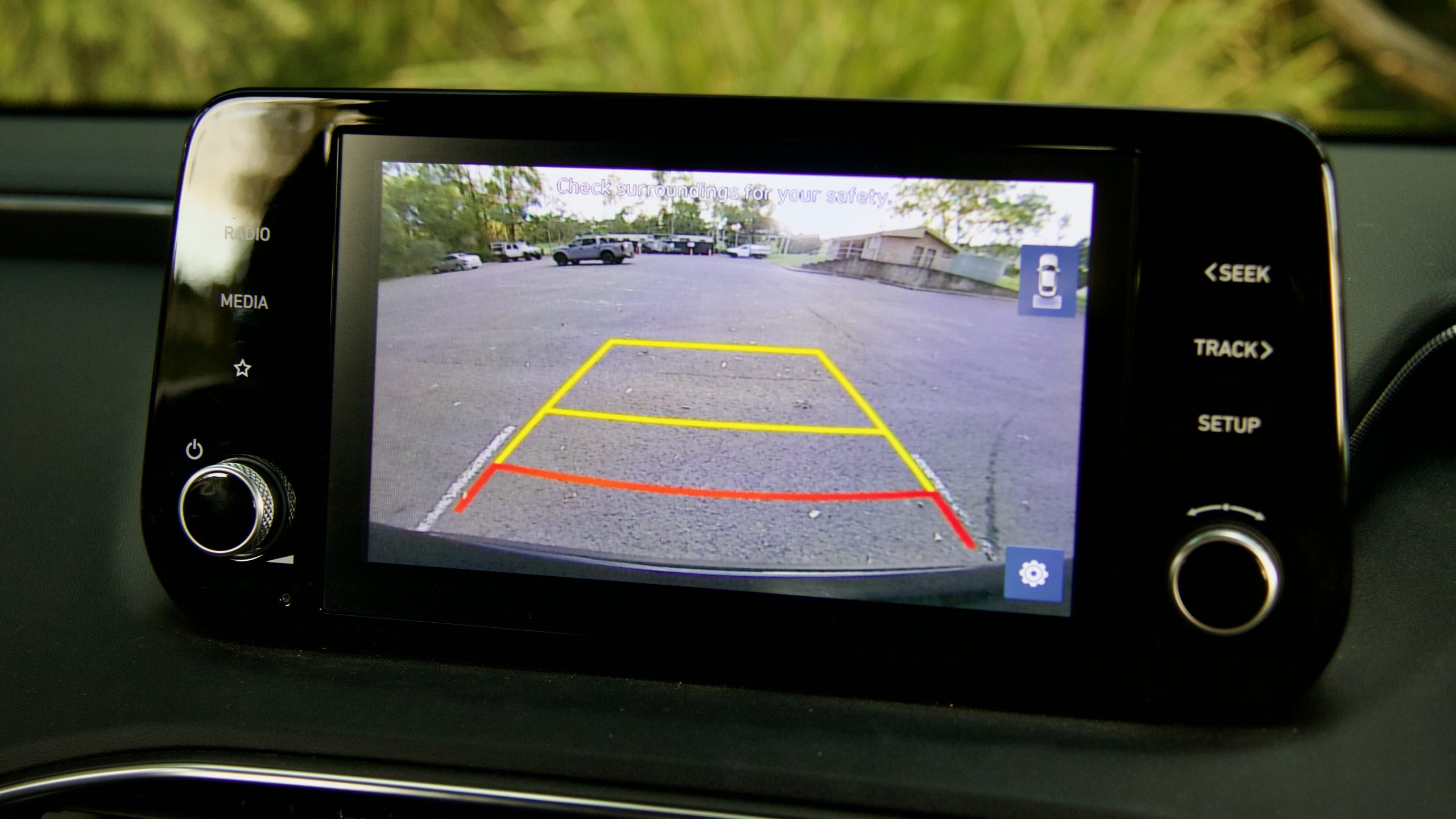
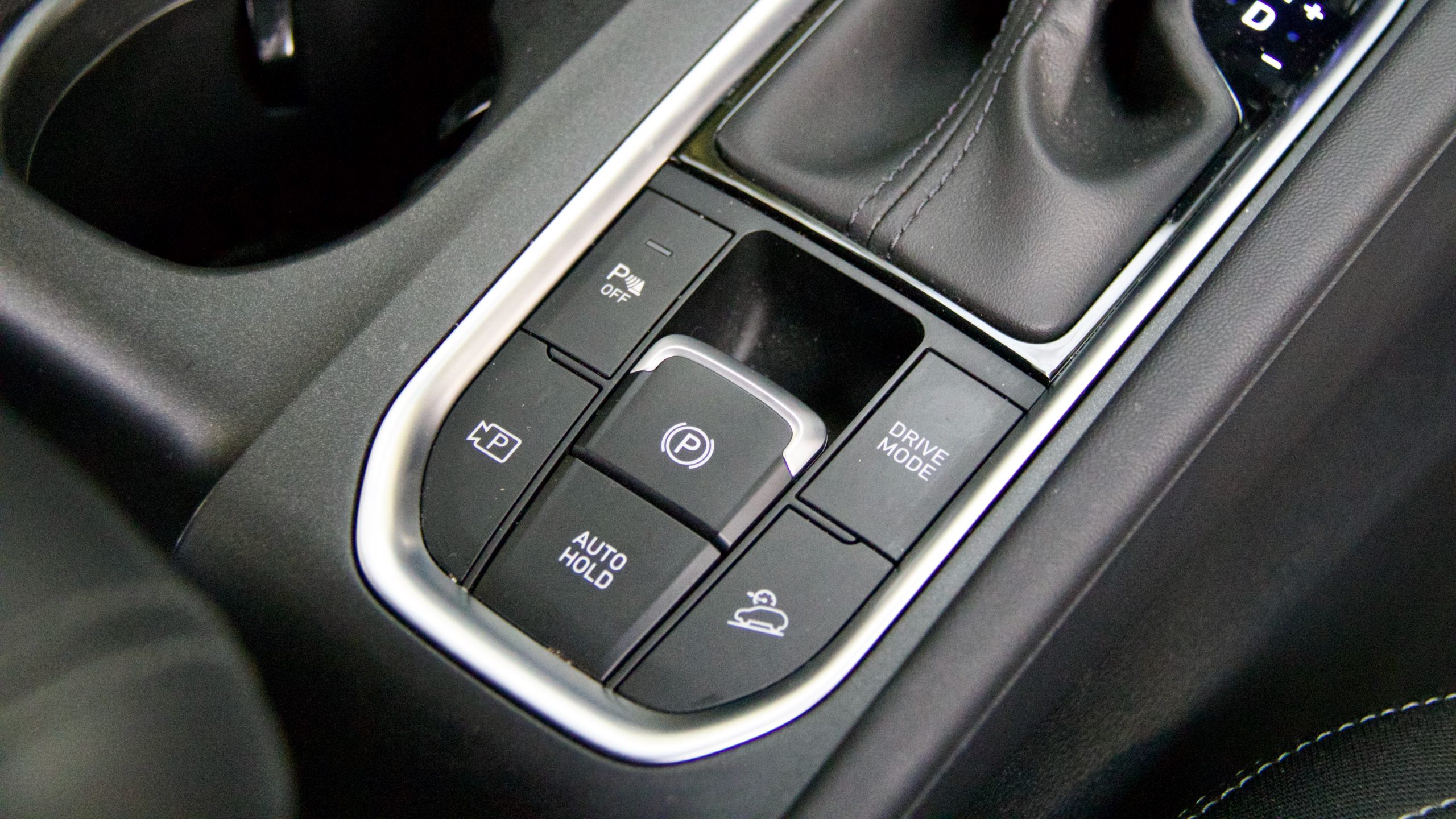
We think the the engine in the Santa Fe is well suited to the car. Once warmed up, it quietly hums away as you drive along and offers a lump of torque low down in the rev range. Give it a boot full and the engine responds well and though we wouldn’t call it the fastest SUV we’ve tested, it is more than adequate for most families.
The transmission is what slightly lets down the driving experience a bit in our opinion. It is a dual-clutch unit and when you are moving along down the road it responds well. It even downshifts when asked, though starting from a standstill is not the gearboxes best strength. It often feels loose and like the engine is just free revving.
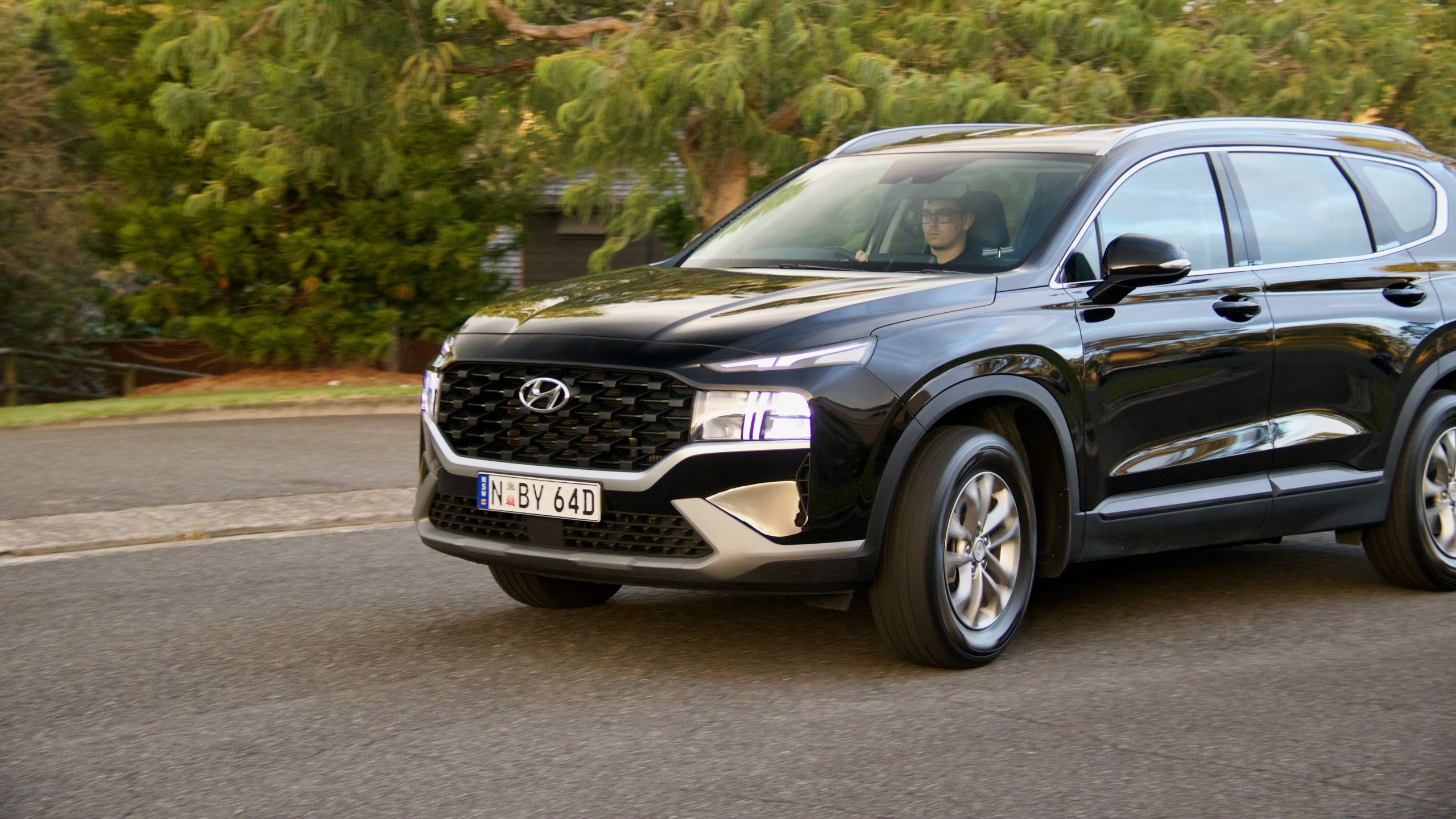
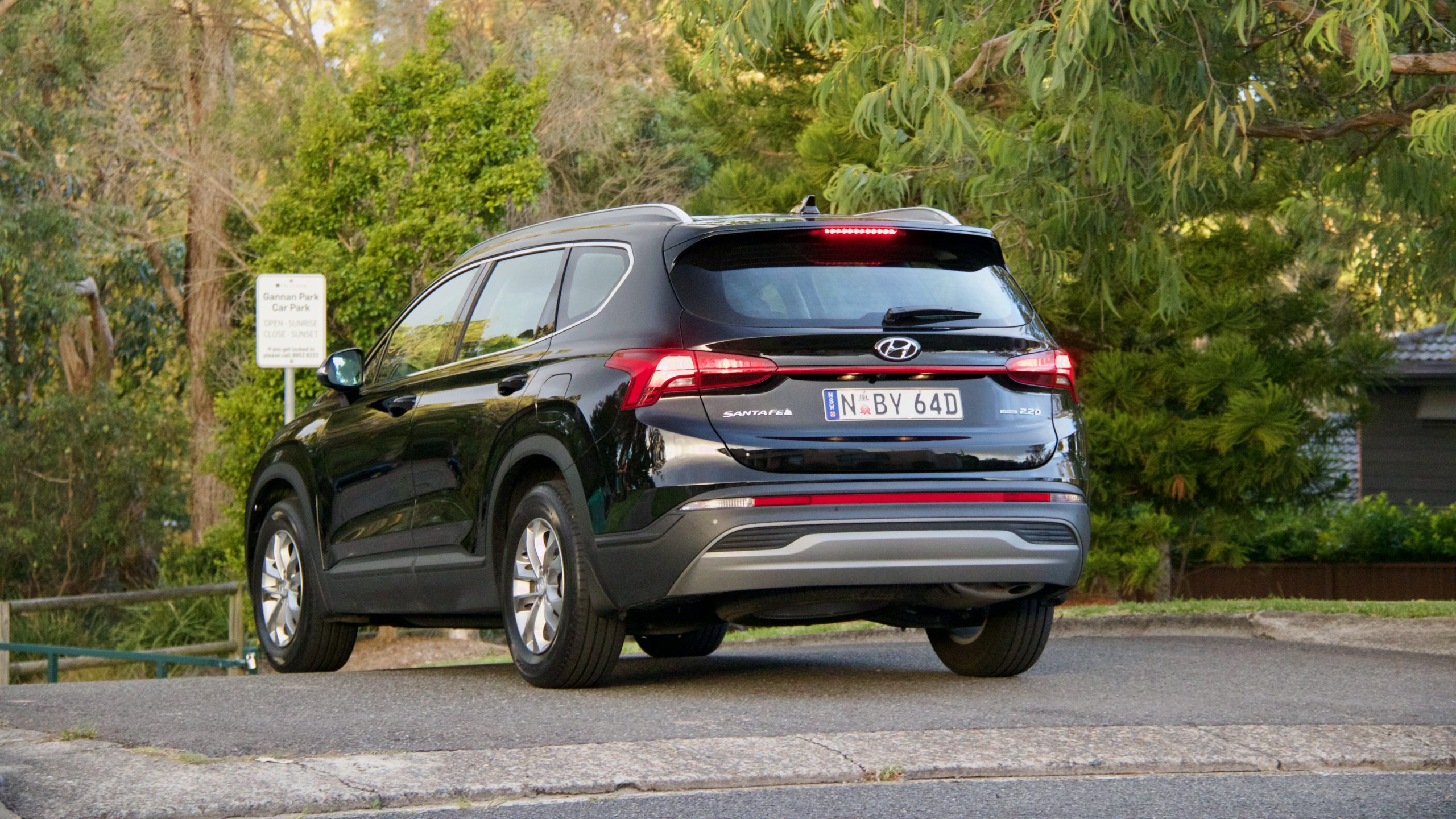
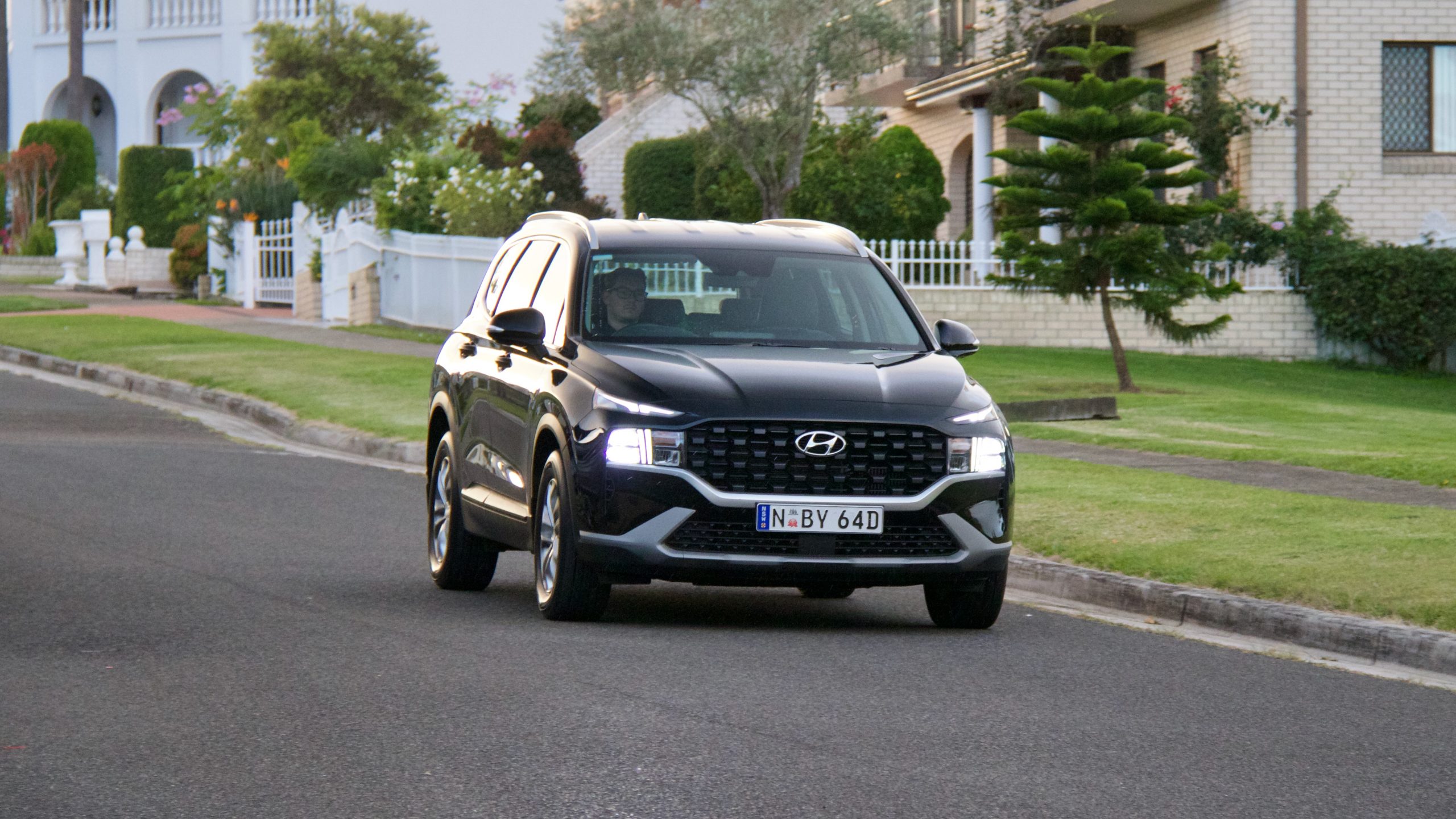
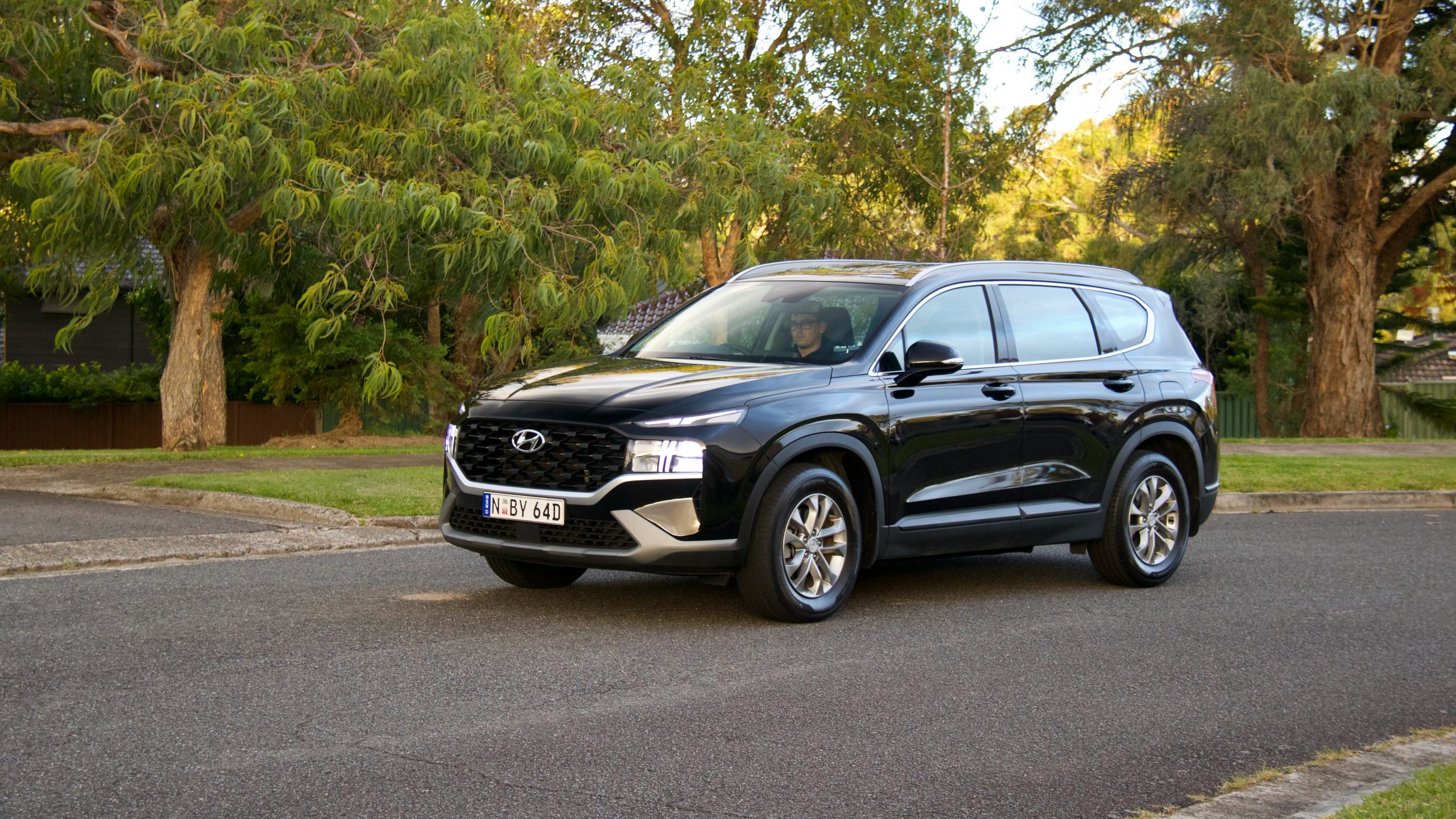
The 2023 Hyundai Santa Fe variants all have a braked towing capacity of 2,500kg. Unbraked the Santa Fe can tow 750kg. The claimed average fuel economy of the Santa Fe diesel is just 6.1L/100km and our week spent behind the wheel of the Santa Fe saw an average fuel economy figure of 6.9L/100km, which we think is reasonable for an SUV of this size and mass. The Santa Fe diesel has a fuel tank capacity of 67-litres.
Ride & Handling: 9/10
The 2023 Hyundai Santa Fe has Australian-tuned suspension, which is excellently tuned for our roads. Helping the base model Santa Fe further are the small 17-inch wheels, which aid in the lovely ride and mean that it battles the city roads and the country unpaved roads quite well with excellent bump absorption and pretty good body control as well. One downside to the smaller wheels with a higher sidewall is that the handling ability isn’t razor sharp, though nor should it be in a three-row SUV. For what it is, the Santa Fe can handle itself when shown twisty roads.
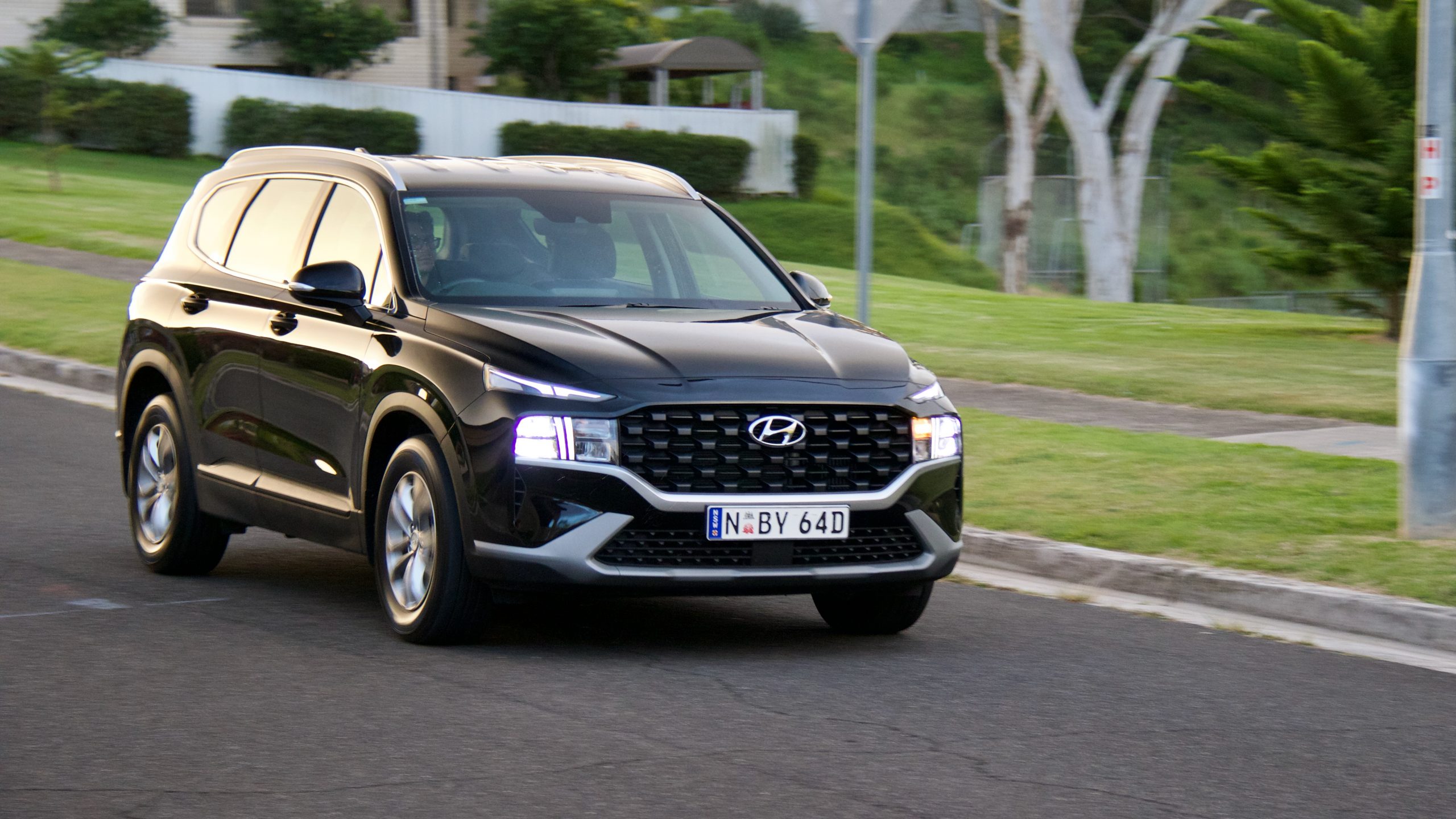
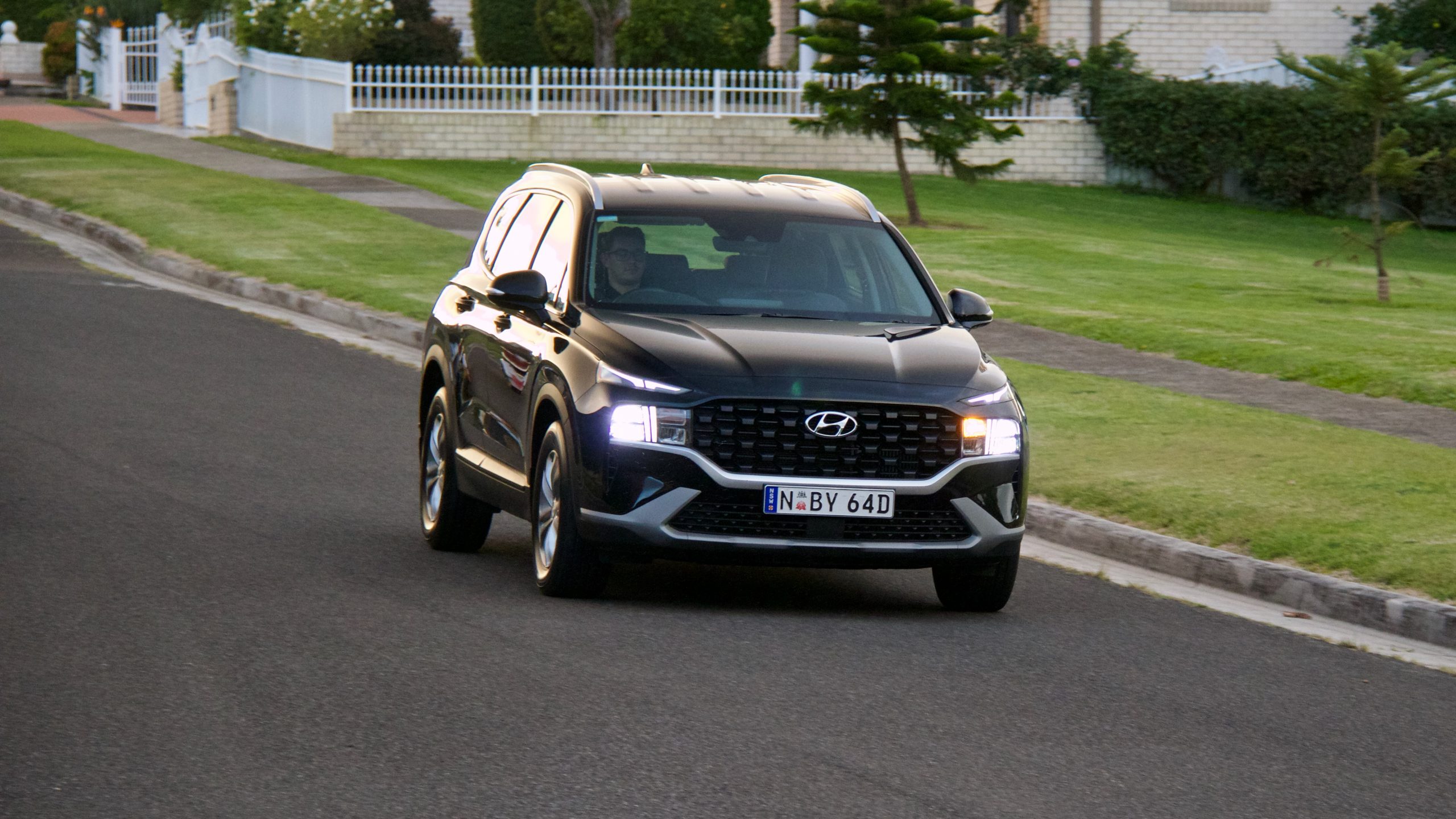
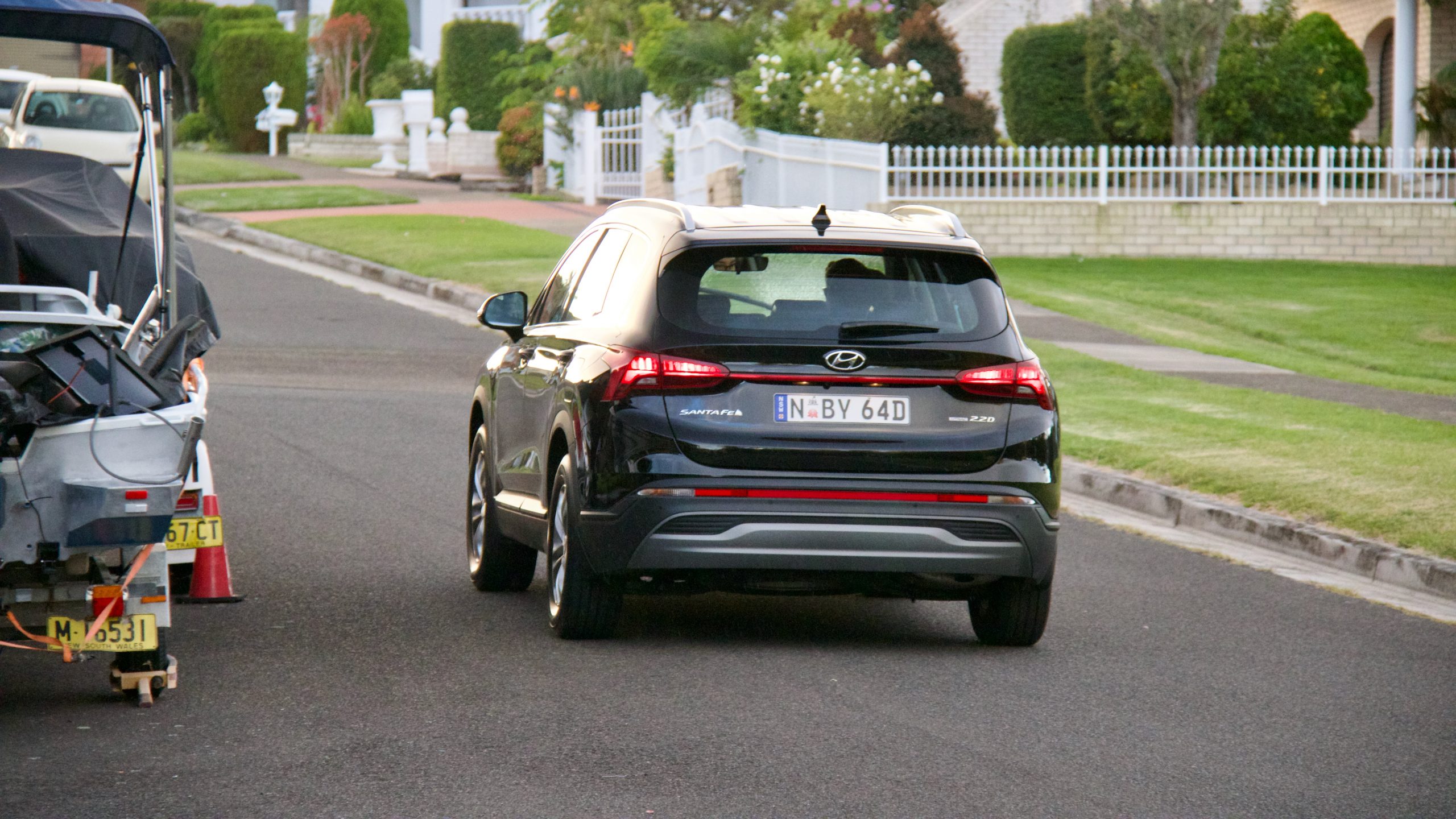
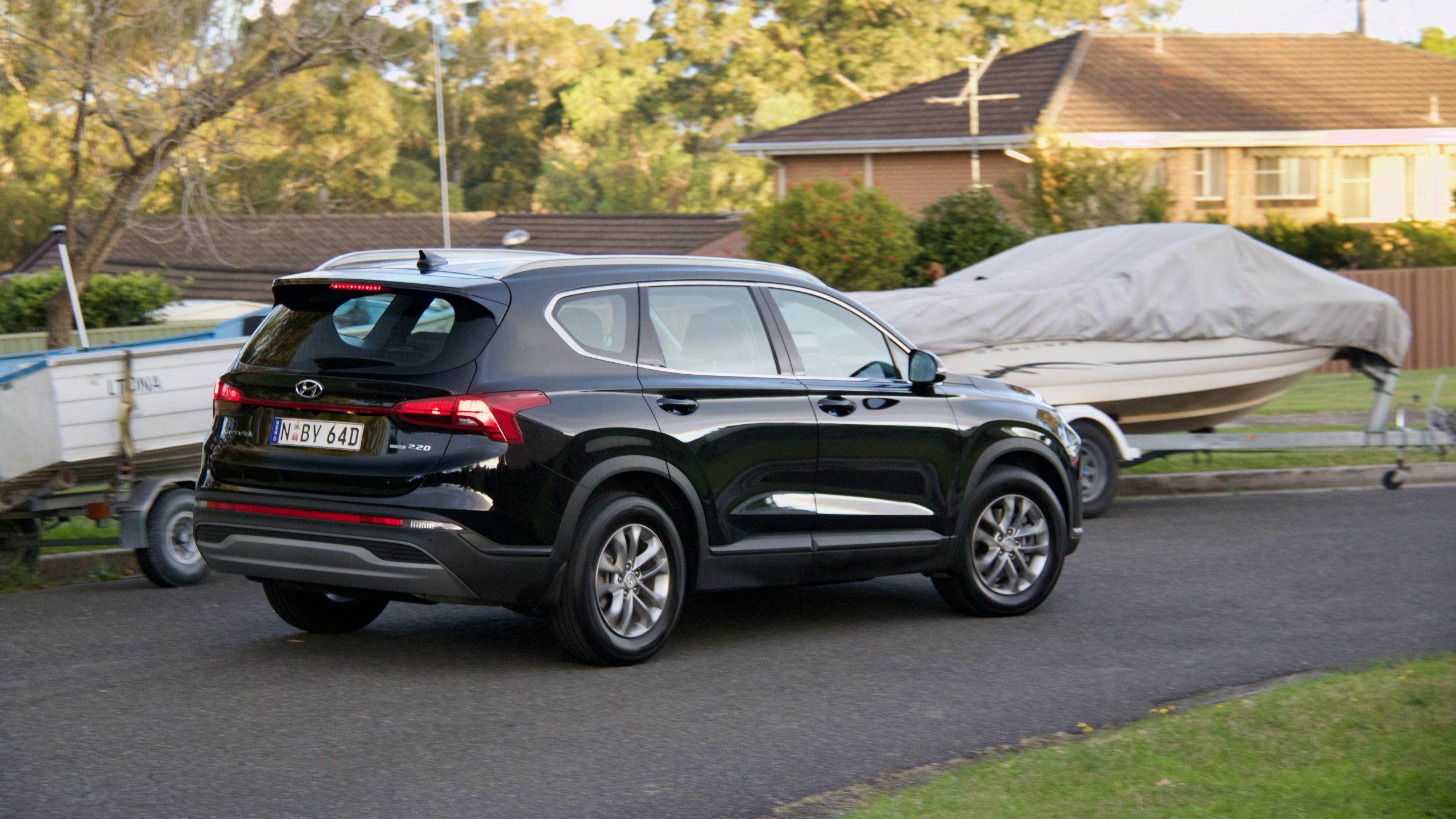
The steering feel in the Santa Fe is rather good – it’s quick and not too heavy and it makes it easier to manoeuvre in tight spaces. The active safety technology package is impressive too, with almost the whole available feature list in the Santa Fe lineup available on the entry model. The blind spot monitoring is accurate, the rear cross traffic alert is helpful and the lane keeping system works well, though can be a little over sensitive at times.
Interior & Practicality: 8.5/10
The interior of the entry level 2023 Hyundai Santa Fe may not be as feature packed as the top spec Highlander but it is impressively comfortable and finished for what it is. It offers comfort for all in its cocoon and offers a reasonable amount of features to keep occupants entertained. The build quality in the Santa Fe is rather good. There are some hard plastics spread throughout the cabin but the touch points feel good quality and like they are built to last. The dash is a soft touch material and the seats are covered in a lovely soft cloth that feels very nice to the touch.
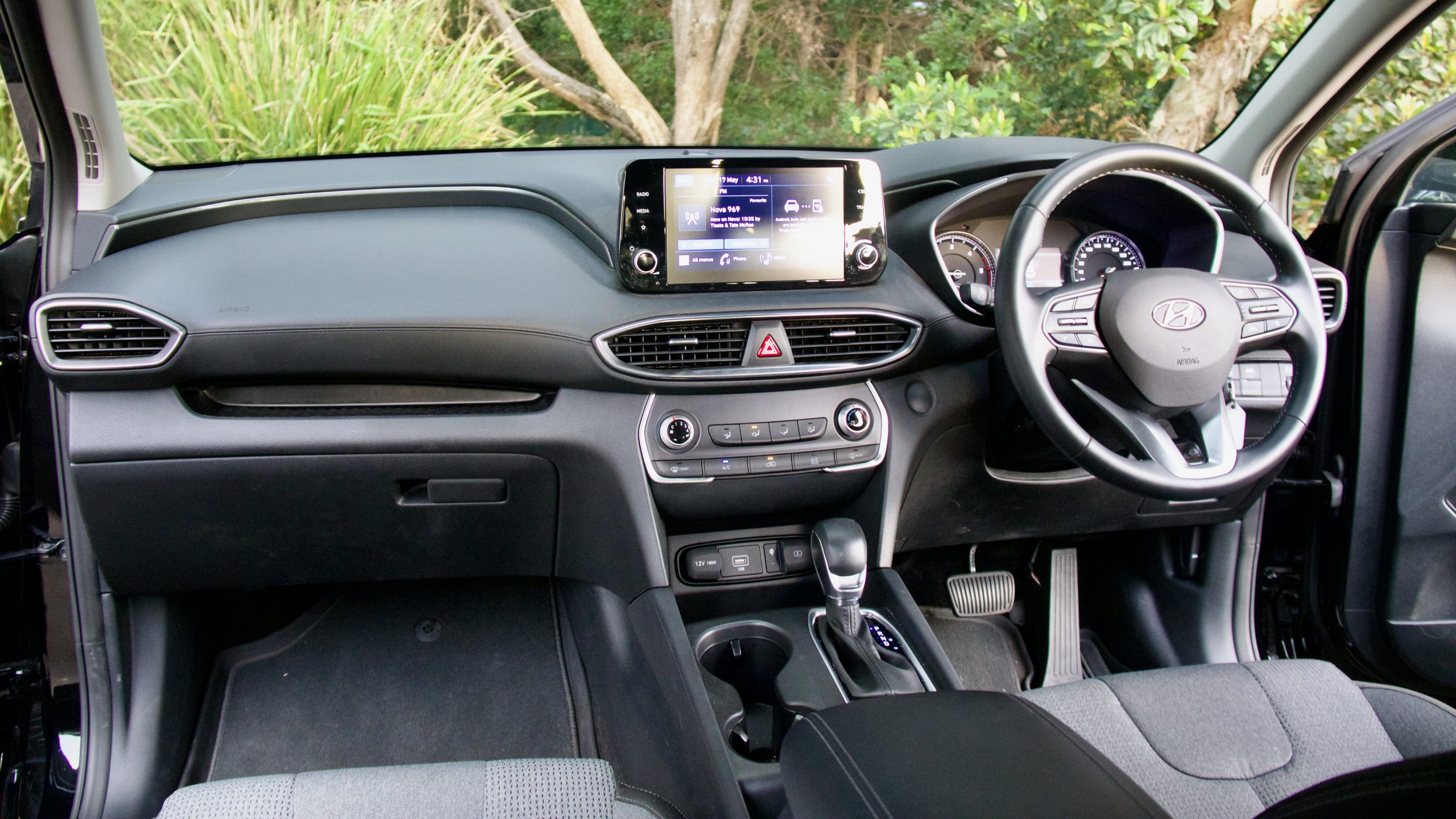
Storage in the Santa Fe is excellent – being a three-row SUV, storage is critical and it impresses on that front. There are two big cup holders next to the gear selector, a wireless phone charger in front of that, storage behind the cup holders, a centre console with dual level storage, a large glove box, door bins that can fit larger water bottles and map pockets in the back of the front seats.
Centre of the Santa Fe’s dash is an 8.0-inch touch screen that offers wireless Apple CarPlay and Android Auto. There is no digital radio or satellite navigation as those features are reserved for the Santa Fe Active and above. The screen quality is good and the infotainment system itself it easy to use, though it’s not the fanciest system. The six-speaker sound system is surprisingly good for an entry level model with good aural quality.
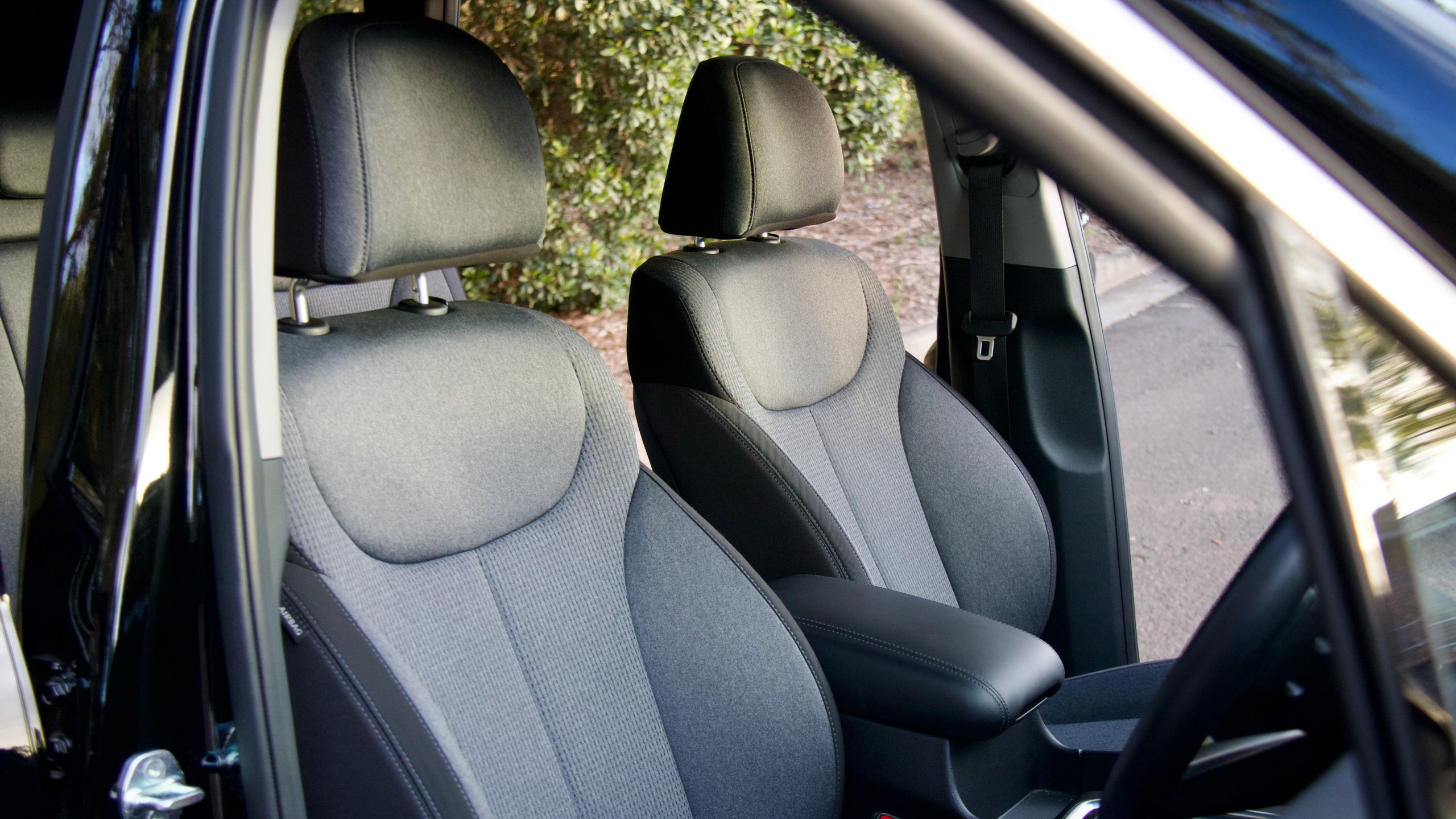
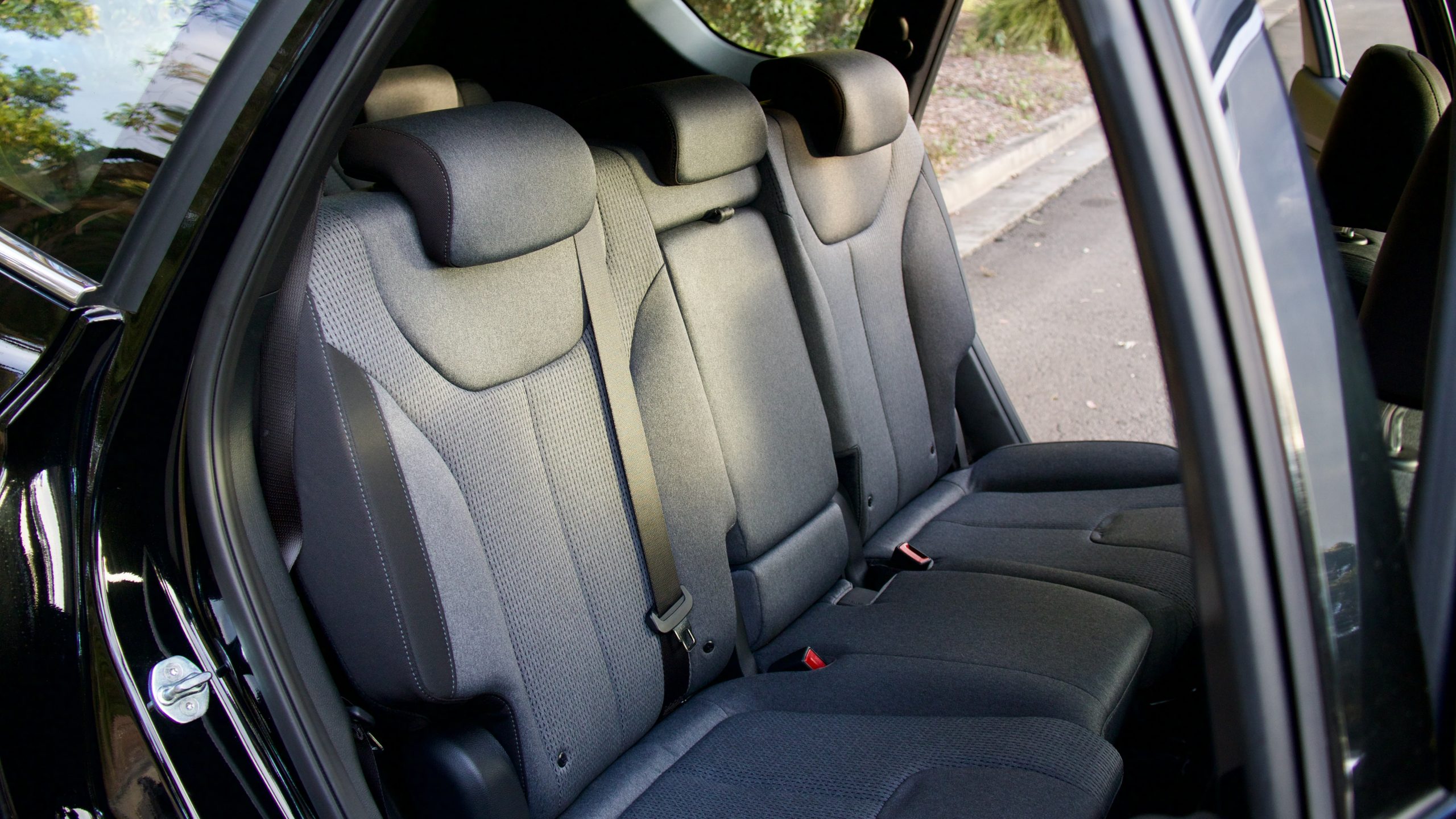

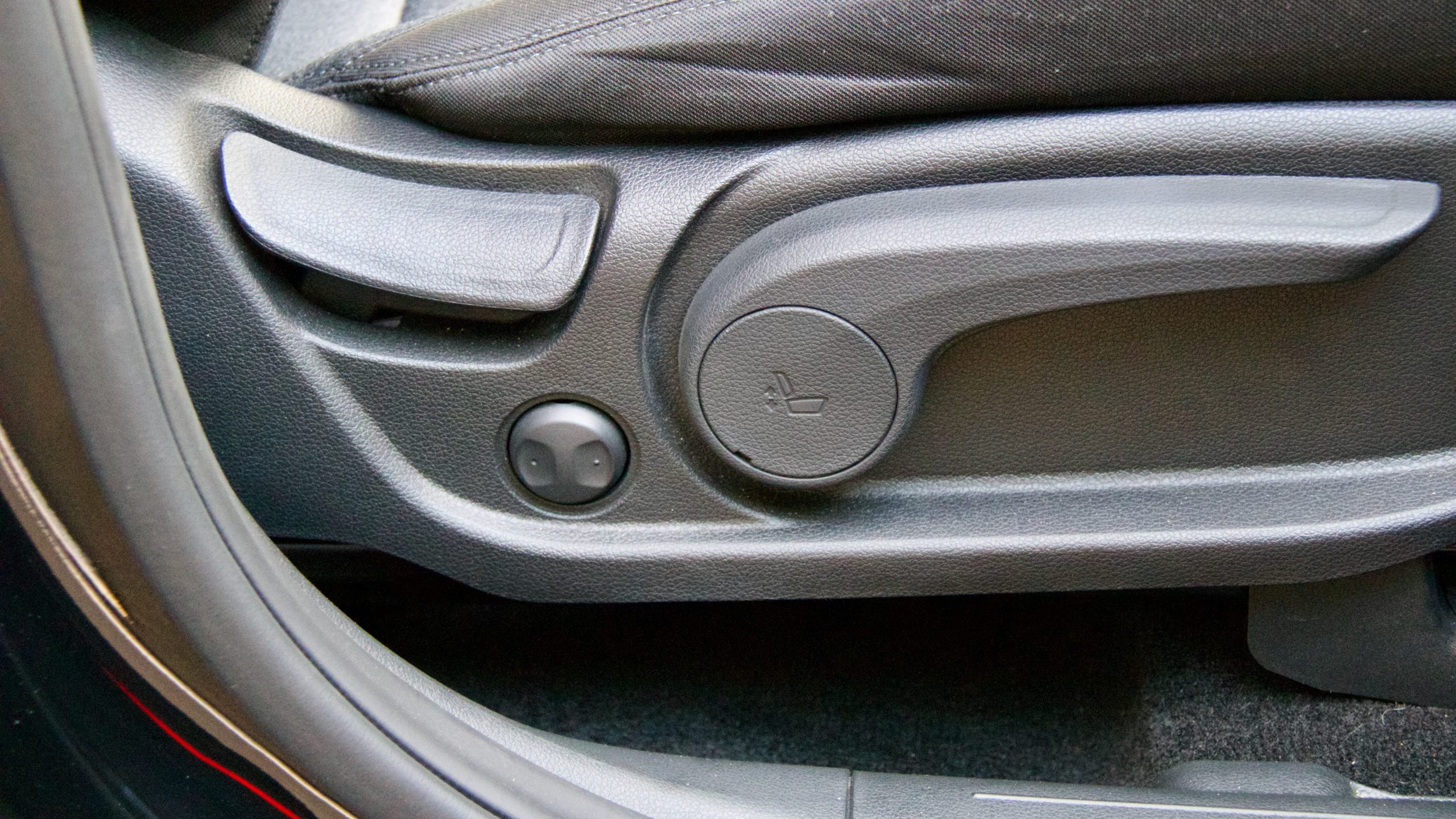
The second row of seating in the Hyundai offers plenty of space for three children or two adults and the seats are also adjustable to make those sitting back there even more comfortable. Amenities on offer include rear air vents, storage under said air vents, two USB-A charging ports, a centre armrest with cup holders, map pockets, grab handles and door bins.
Getting into the third row is easier than you may think, given that it’s not the biggest SUV on the outside. There are buttons on either side of the second row seats and once you press one, the seat bows forward to gain access to the third row. Once you sit back there, it’s spacious for two kids though adults will struggle for room. There is a fan speed controller, cup holders, two USB-A charging ports and more rear air vents – though the airbag coverage doesn’t extend that far, unfortunately.
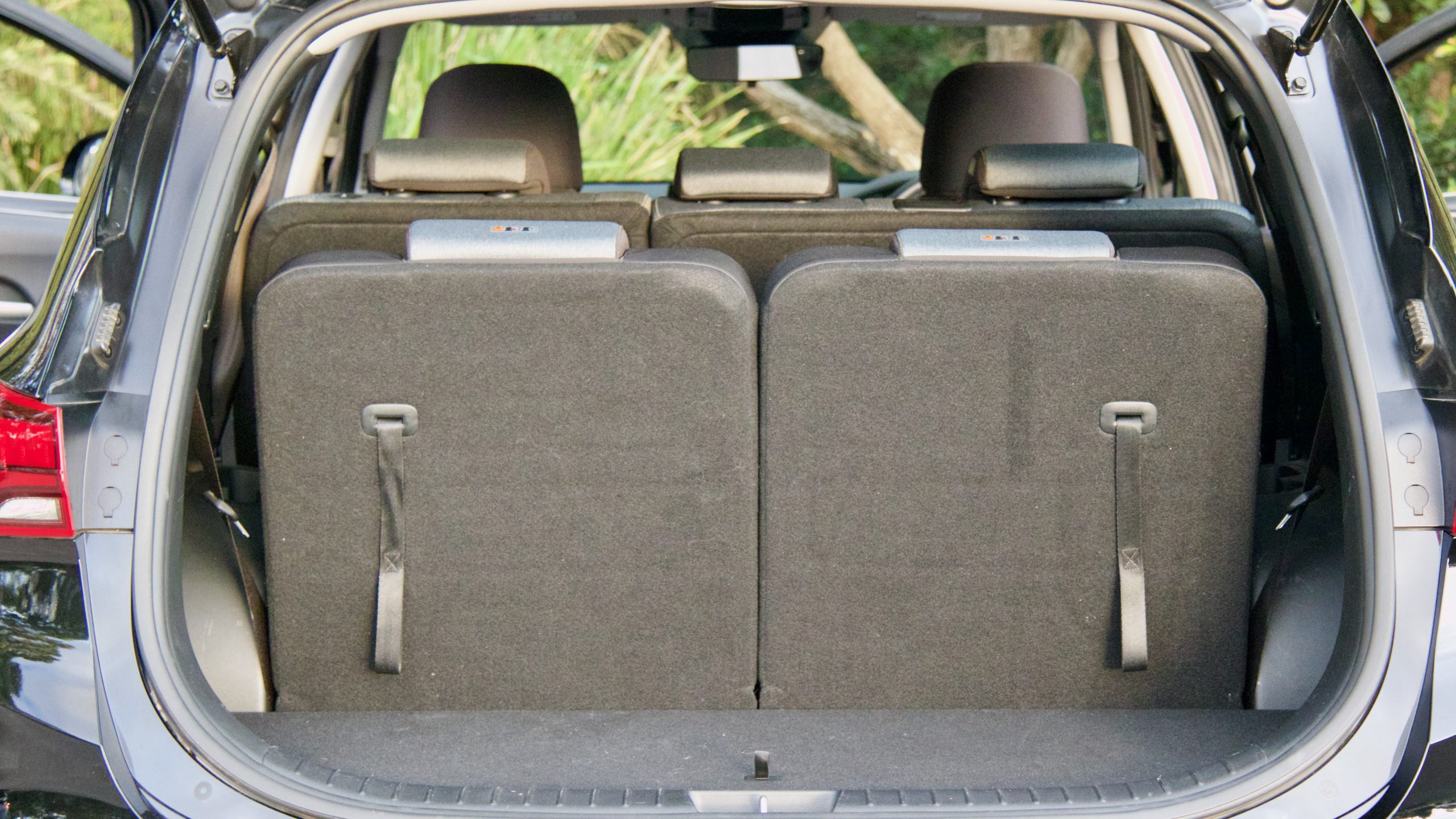
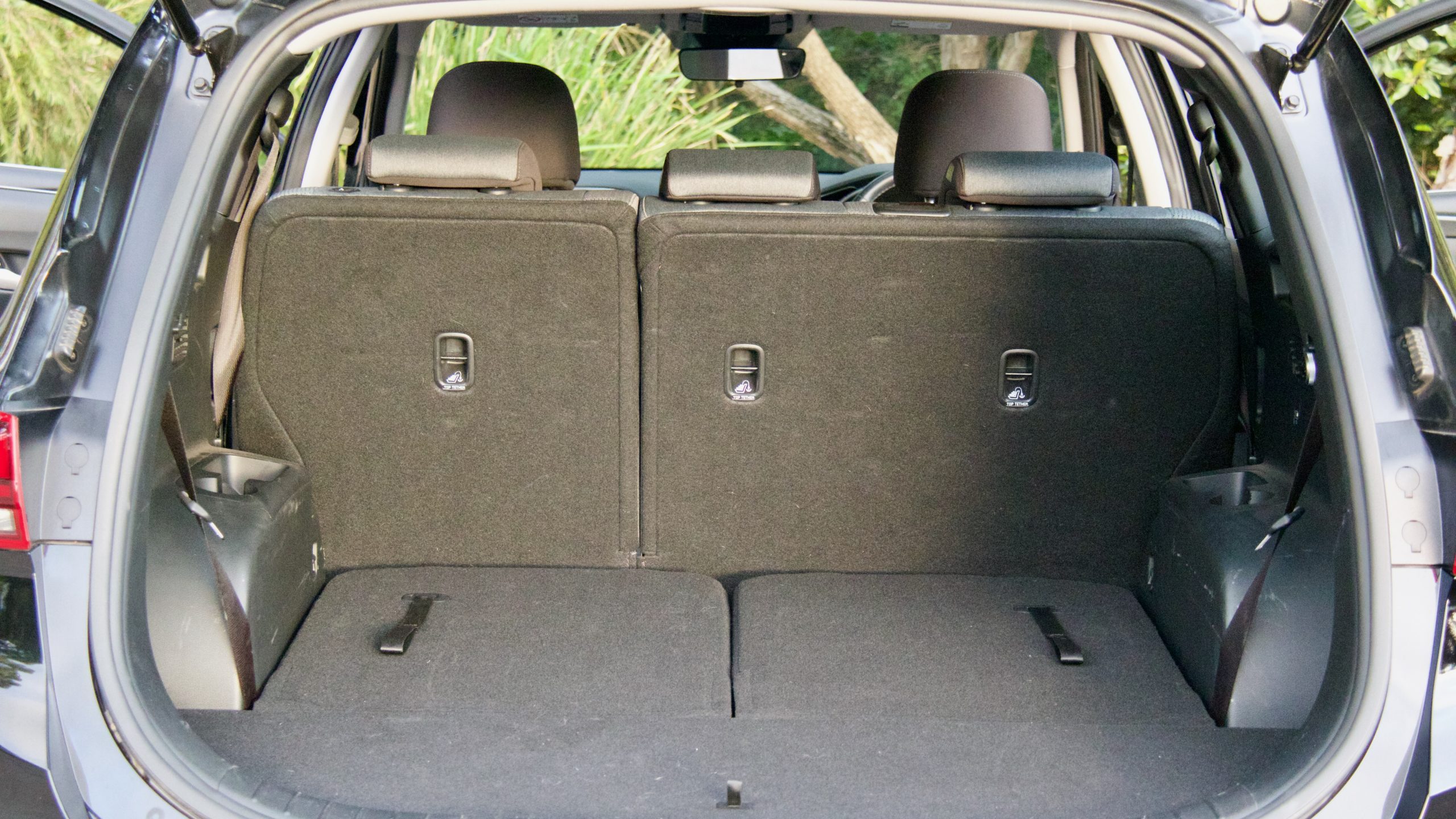
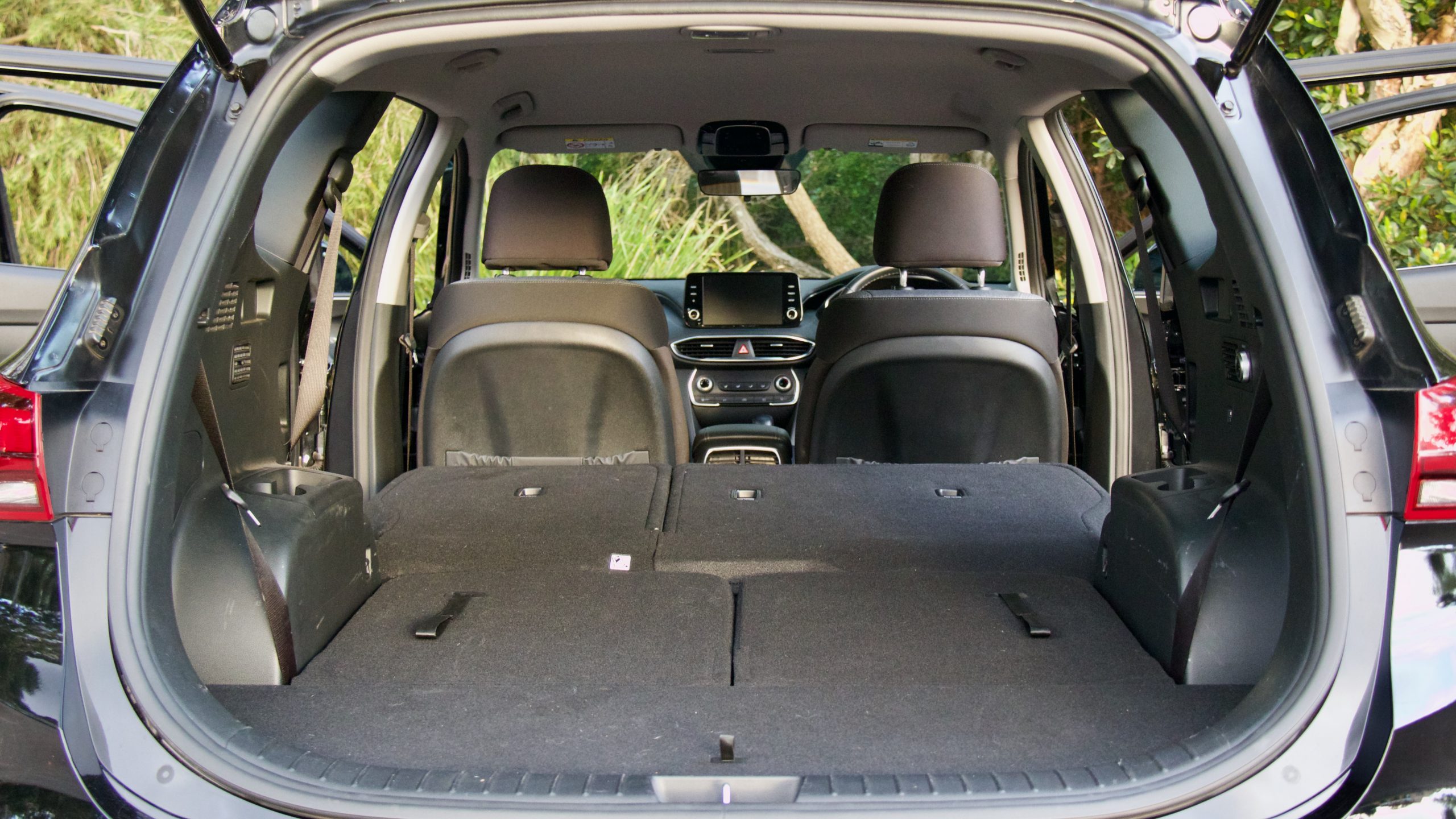
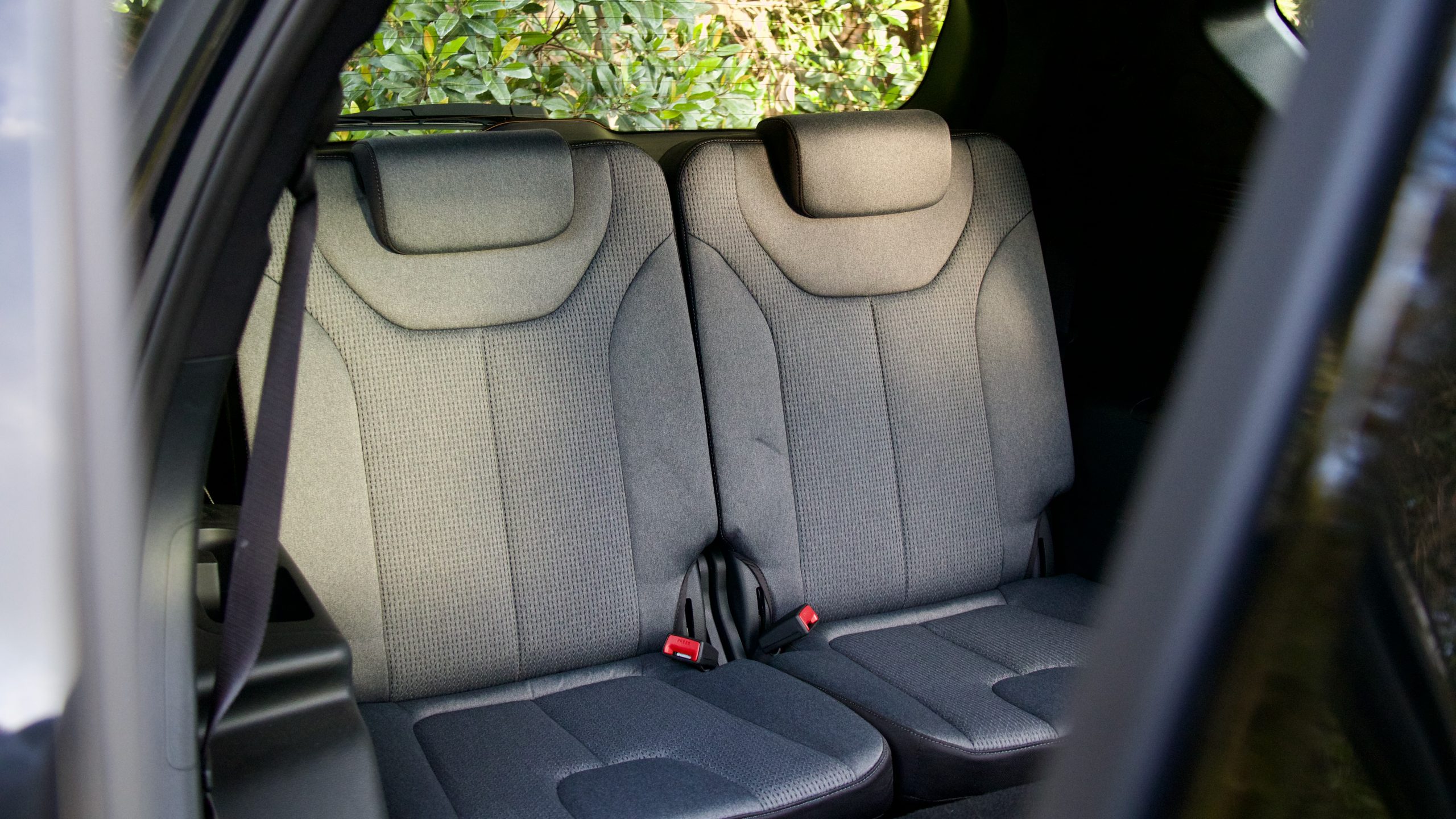
Opening up the boot of the Santa Fe reveals a cargo area of 130-litres with all seats upright, 571L with the third row folded and a flat floored 1,649L of space with both the second and third rows folded. This is smaller than the Sorento – there is 187L and 616L respectively on offer in the Kia – and folding all seats in the Sorento gives you 2,011L. In the larger Kluger there are 332L, 658L and 1,909L respectively.
Service & Warranty: 8/10
The 2023 Hyundai Santa Fe is covered with the brand’s five-year/unlimited kilometre warranty and 12 months of roadside assistance, which is extended at every scheduled service through Hyundai for a further 12 months for up to five years. The Toyota gets the same five-year/unlimited kilometre warranty, though if serviced a Toyota dealership it gains an extra two-year warranty on the powertrain, but it does not come with any form of roadside assistance. The Kia is covered by a seven-year/unlimited kilometre warranty and has the same roadside assistance program as the Hyundai but for up to eight years in total.
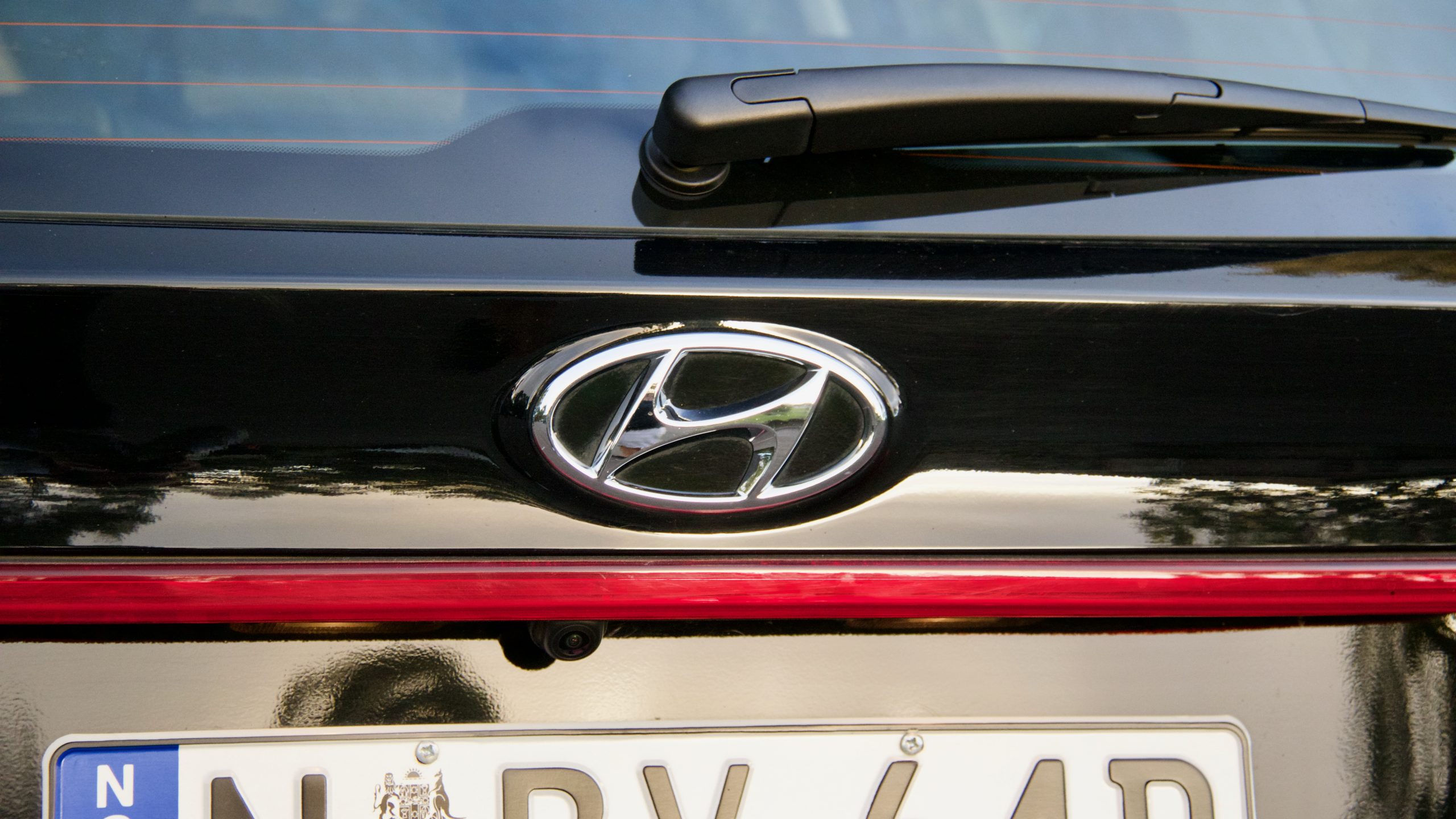
Servicing the Santa Fe occurs every 12 months or 15,000km, whichever comes first, which is identical to the Toyota and Kia. Servicing the Santa Fe over the span of five years/75,000km is $2,495 (first five services are $499 each). The Sorento will cost $2,427 (average service cost of $485.40) and the Kluger will cost $1,325 (first five services are $265). The Hyundai doesn’t have the best warranty period, not is it as cheap to service as the Toyota but we think the aftersales package for the Santa Fe is reasonably good.
2023 Hyundai Santa Fe Diesel DiscoverAuto Rating: 8.1/10
So you’re looking for a large three row SUV but have a budget to stick with, is the 2023 Hyundai Santa Fe the car of choice? Well, we certainly think it is worth considering as there are many positives to this entry level variant – you get a reasonably well equipped car with handsome styling and a good aftersales package. The engine is also both punchy and efficient, more than powerful enough and relatively quiet on the daily school run, while it’s very comfortable as well with a great ride and handling balance.
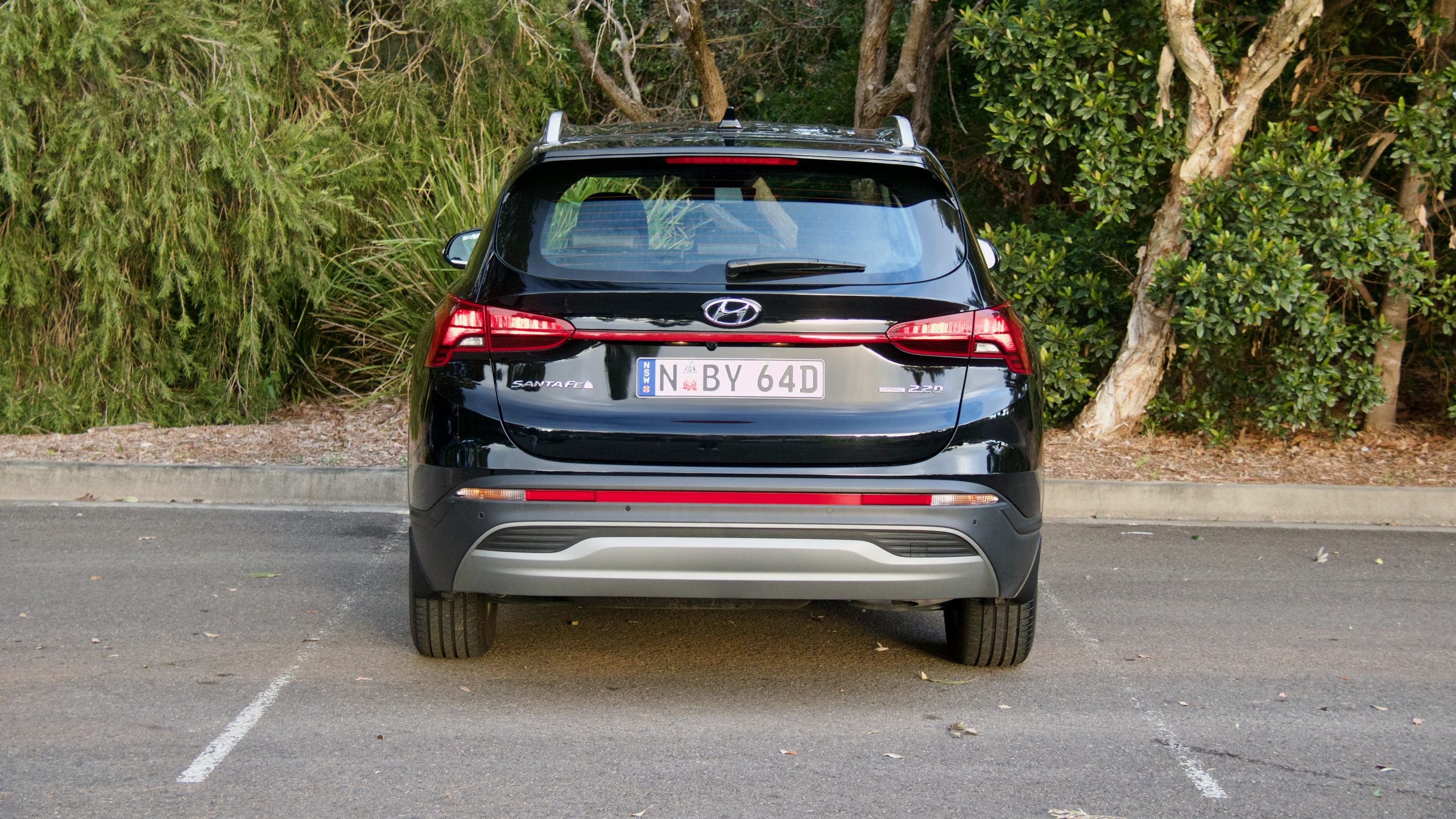
So are there any downsides? Well the transmission could be more surefooted, the third row of seating isn’t massive, it could have more equipment and we think that the extra cost to jump to the Santa Fe Active is money well spent. All in all, we quite like the 2023 Hyundai Santa Fe here at DiscoverAuto and think it is definitely worth your consideration.
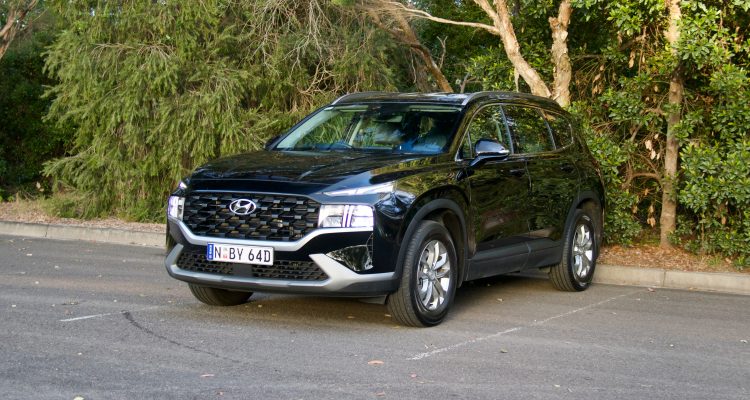
Leave a Reply